How might my diagnosis affect my relationships?
It’s normal for your diagnosis to impact some of the relationships in your life. Due to the emotional nature of the subject, your friends and family may react differently to the news. It is important to remember that their response doesn’t change their feeling towards you; the fact is that people show their emotions differently. So while some people become immediately protective of their loved one and want to be involved as much as possible in recovery, it may take some time for others – particularly children – to come to terms with the news.

It is important to emphasise that everyone is different when it comes to maintaining relationships following a heart event. However, with patience and awareness, the bond between you and a loved one can grow stronger than ever before.
Read about how to navigate your relationships below, to ensure that you receive the best support from your friends and family following your diagnosis.
Time to communicate
Communication is key when it comes to maintaining strong relationships following any health diagnosis. Put plenty of time aside to speak to your loved one about your diagnosis. Even if the news upsets them initially, later on they will appreciate you giving your time to talk to them about your condition.
We recommend that you choose a suitable time and place (a safe, private space such as your kitchen table) to have the conversation, and think about what you need to express to your loved one – for example, details about your diagnosis; your needs from them; and potentially reassurance that they can maintain ongoing communication with you and ask questions about your condition.
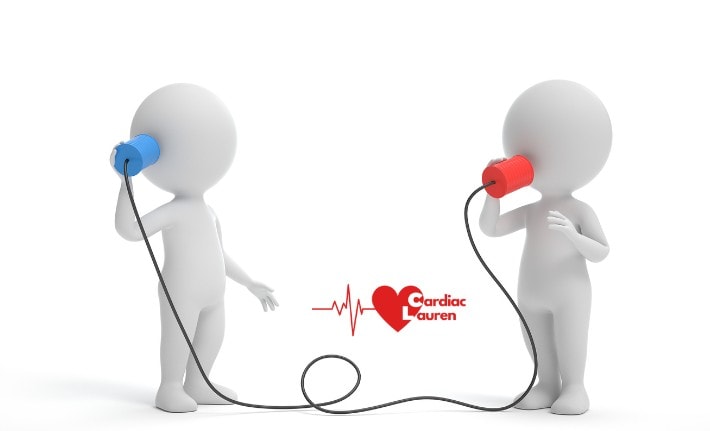
When a family member becomes a carer
Whether it’s short-term or long-term, becoming a carer for somebody else can be a daunting challenge and one which may take some time to adjust to. Try to be patient with a loved one who becomes a carer, as they may make mistakes at first and need encouragement and reassurance from you that they are doing a good job. Gently remind them when something needs doing and let them know that you trust them to care for you.

If your partner becomes your care-giver, it may impact the intimate side of your relationship. This is because the practical requirement of care may overshadow the emotional and physical connection with your partner. Let your partner know that they can still show intimacy and affection towards you, even if it is through kissing, caressing and other romantic gestures.
When somebody becomes overprotective
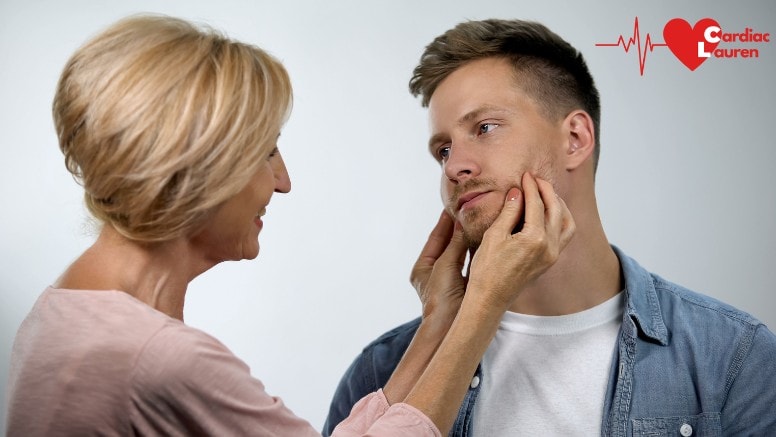
Overprotective friends and family mean the best. Although they may come across as bossy, overprotective loved ones are often chronic worriers whose way of coping is to ‘control’ as much as they can. It can, however, be frustrating to be bombarded with ‘advice’ or told when to take your meditation or how to eat.
As long as you are following your doctor’s advice, if you find someone’s behaviour too overprotective, find a time and place to speak with them. Kindly but firmly tell them that you appreciate how dedicated they are to supporting you, however, you are finding their behaviour overbearing and unnecessary. Tell them your honest feelings and reassure them if need be that you are making steps towards better health. If appropriate, you could also set boundaries; for example, you can remind me to take my medication if I have clearly forgotten, however, you should not comment on my diet.
How to speak to children about your diagnosis
Think carefully about what you’d like to share about your health condition with your child, but aim to be clear and honest. Many children will be frightened and worried by the news; they may have heard of similar events from school friends or even in the news. Allowing your child to ask questions about your condition is crucial, as well as reassuring them that you are still their parent who loves them.
For older children, consider that they may feel guilty for spending time away at home; for example, if they are out with friends after school or moving to college or university. Reassure your older child or teenager that you want what’s best for them and ensure that their own needs are being met – particularly if they are helping out more around the house.

Some children and even adults lash out when they hear upsetting news. Try to be patient with this, and let them know that you are here for them if they are ready to engage with you calmly again. Lashing out often occurs when a person takes a longer time to process negative news; it is upsetting for you, but time usually changes their perspective. Also, consider letting your child’s school know about your diagnosis. Most schools have support systems, or at least your child will be on a teacher or pastoral worker’s ‘radar’.
How can I support my friend with their diagnosis?
If you are a friend of someone who has been diagnosed with a heart condition, you may feel the need to back away to give them more time with family. Alternatively, as a non-family member, you may feel helpless and the need to ‘overcompensate’ to support your friend (such as more phone calls and coming around with support packages).

The best balance between these two reactions is to continue your friendship as normal, but occasionally ask if they need extra support from you. Some people will want to talk about their diagnosis, whereas others – especially with their friends – want their time with you to be as close to ‘normality’ as possible. Listen to your friend and understand their needs but try not to treat them differently to how you would have done before – have a laugh!
Friendship advice for the diagnosed
You may wish to tell your friend that they can ask about your condition, rather than ‘tip toe’ around the subject. They may be nervous or unsure whether they can bring this up with you. This is completely your decision, but perhaps a good early boundary that you can set with them.
Friendship circles also often involve social drinking, which you may have been instructed to avoid by your doctor. If it becomes clear that your relationship with your friend is based on alcohol, or they put pressure on you to continue drinking, then it is best to avoid these individuals and work on the more meaningful relationships in your life. Nobody should ever pressure you to drink while diagnosed with a heart condition; as long as they understand the implications for your health, then there is no excuse for this behaviour.

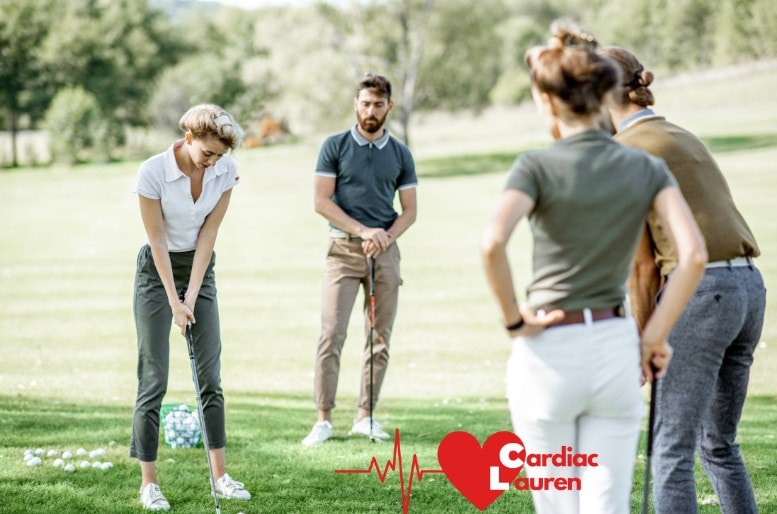

Overall, the news of your diagnosis will produce a range of different reactions, from shock to fierce protectiveness. While some people may become more distant and others closer, give your loved ones time to process the news and make your needs clear to them. Try to be patient, as it may take a while to navigate a relationship where the dynamics have shifted slightly. Most importantly, make sure that your relationships are still grounded in equality and bring you joy.
Make time to do the things you enjoy with your loved ones; laugh a lot; and create meaningful moments.
In Cardiac Lauren there is a support network via our WhatsApp group where members can ask each other questions and offer support. For Heart Failure patients find more information here.
3. The benefits of regular activity and exercise on the body
Watch to learn about the many of the benefits of exercise on our body. These are benefits for everyone and not just cardiac patients.
Why being aware of heart health is everyone’s priority
When it comes to taking care of our heart health, it can be easy to dismiss medical advice if we are younger in age; consider ourselves fit; or have no family history of heart disease. Indeed, it is often accepted that those at risk of heart issues are older or overweight individuals. But to what extent is this true?

Cardiovascular disease is one of the leading causes of death, taking an estimated 17.9 million lives each year (World Health Organization). Heart and circulatory diseases also cause a quarter of all deaths in the UK. These statistics – and indeed a person’s heart health – are affected by a huge range of factors in which awareness is crucial. Although a person may not show any symptoms of poor heart health, the decisions they make now, combined with an awareness of heart-related risks, can reduce the likelihood of developing a future heart issue.
This article will outline why being knowledgeable and taking care of your heart health is important for everyone – regardless of age, weight and genes.
Prevent not treat
Many people learn how to properly take care of their heart health after a heart event – an experience which has already caused a large amount of physical and emotional stress and upheaval.
Everyone should know how to reduce their chances of developing a heart issue throughout their lifetime and doing this starts with education on how to lead a healthy lifestyle. Generally speaking, this may look like a diet low in saturated and trans fat, as well as sugar, alcohol and other ‘junk food’. We should eat plenty of fruit and vegetables; engage in regular physical activity; and find ways to alleviate stress in our lives.
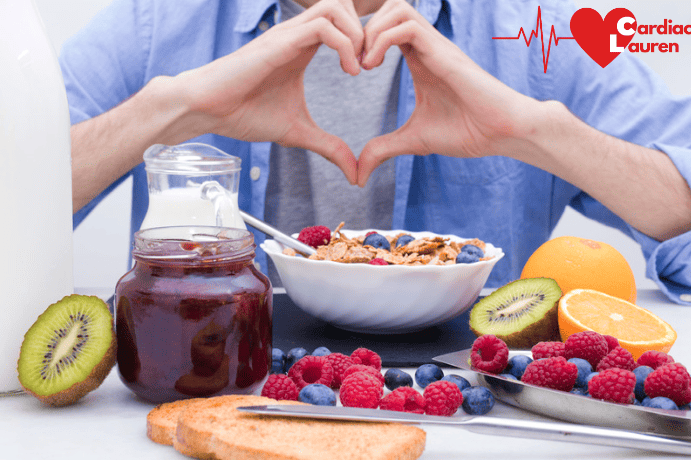
Stay healthy long-term
In a similar vein, if we form healthy habits when we are young, they are more likely to stick in the future (when we are more at risk of heart issues). For example, recent research suggests that post-menopausal women have a higher risk of heart disease. Find out more here.
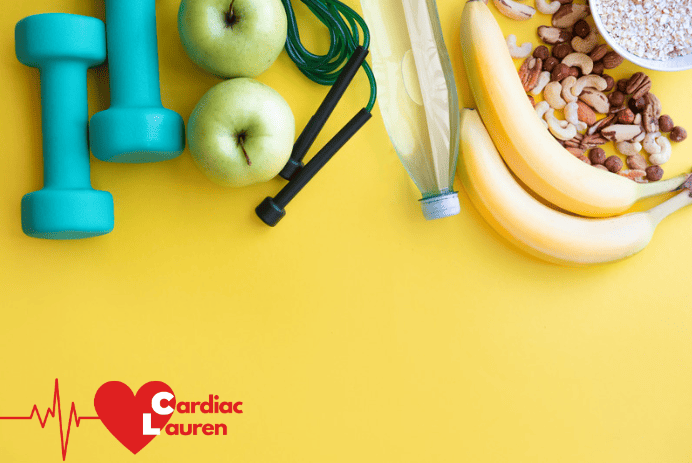
Although healthy habits look different to everyone, they could be as simple as taking the stairs over the lift; drinking 8 glasses of water a day; starting each meal with a vegetable starter; or prioritising adequate sleep. Not only will this have a positive impact on your future health, but you’ll also feel healthier and more energised in the present.
Be able to identify warning signs – in yourself or someone else
Being knowledgeable about heart health also means that you are able to spot warning signs in yourself or others.
A tight or uncomfortable chest, as well as pain in the arms, jaw and back; or feeling sick, sweaty and light-headed can all be signs of poor heart health or a heart attack. Even if we ourselves are not at risk, passing on information or informed advice to someone who is can save a life.
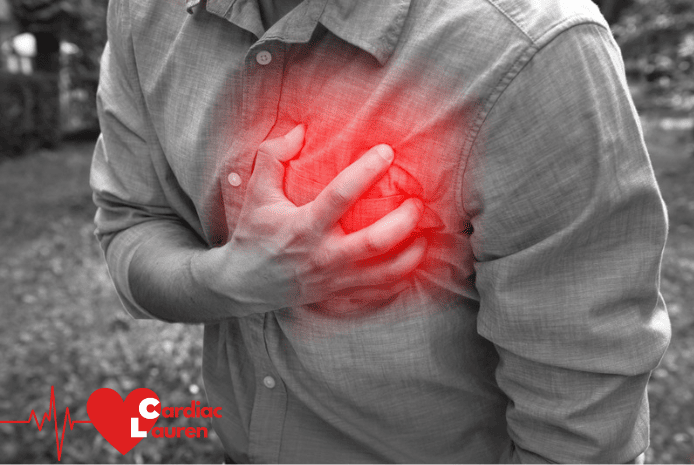
Know your own risk
Being curious about your own risk of cardiovascular disease can make you analyse your own lifestyle and in particular, your genetic disposition to developing a heart issue.
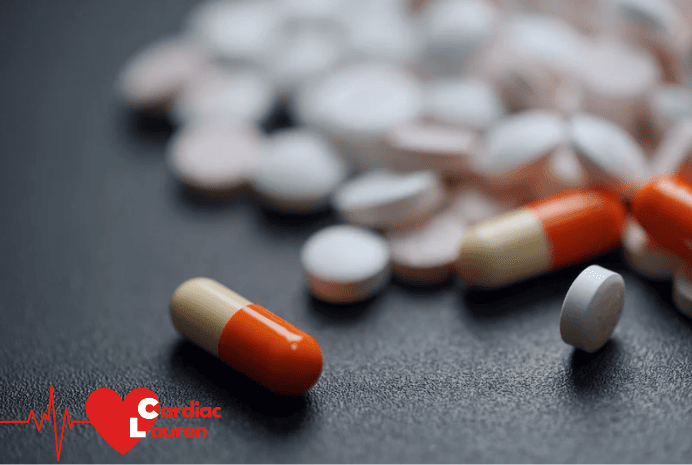
Your doctor may occasionally ask you if anyone in your family has a history of heart disease, and it is important to make your doctor aware if anyone has. Different inherited heart conditions require different treatments which may involve medication, implantable cardioverter defibrillators (ICDs) and lifestyle changes.
Where do I start?
The best place to start becoming aware of heart health is to check your family history and ask your doctor to analyse your risk at your next appointment.
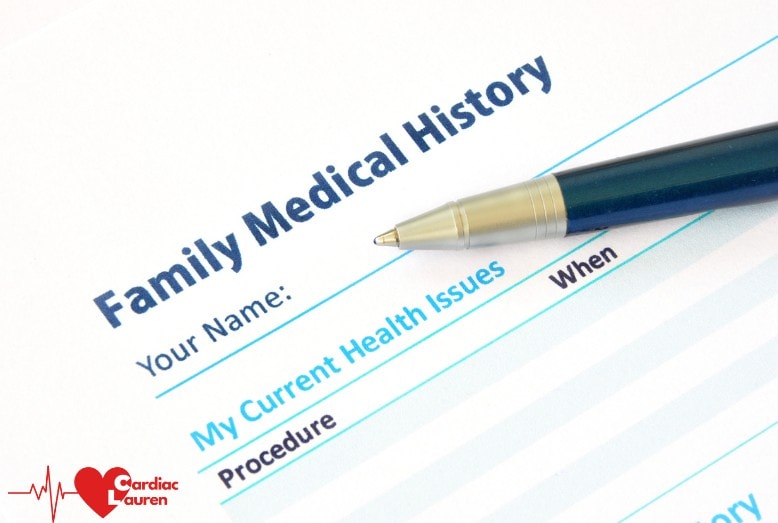
We then recommend looking at the British Heart Foundation Heart Matters magazine here which is an expertly informed hub of information, research and advice.
Overall, when it comes to protecting our heart health, knowledge is power and being aware of the risks can save lives and upheaval in the future. Cardiac rehabilitation is all about prevention as well as rehabilitation so the Cardiac Lauren programme is perfect for everyone. We hope that this article has been beneficial and will enable you to take care of your heart health today and in future years to come.
2. What is the difference between physical activity, exercise and fitness?
This video explains what the difference is between physical activity, physical exercise and physical fitness. It also explains the different components of fitness.
1. Why you should be active and exercising regularly
This short video explains why being active and exercising regularly can help you stay healthy and reduce the risk of developing a number of medical conditions.
Below is the script for the video so if you are unable to watch it the information is below.
Be Active and Exercising Regularly
In cardiac rehabilitation, we always try to encourage you to be more active in your everyday life and participate in regular cardiovascular exercise as often as possible.
This is because we are trying to help you reduce your risk of developing a range of other medical conditions which include coronary heart disease, hypertension (which is high blood pressure to you and me) high cholesterol, stroke (including TIA’s), diabetes, obesity, osteoporosis, and some cancers (breast and colon cancer).
Exercising benefits
Exercising regularly, which means getting your heart and your lungs going on a regular basis is good for you for many reasons.
- It helps increase your fitness and stamina levels.
- When you exercise more, you are going to increase your muscle bulk.
- Being active helps with the activities in your daily living.
- You don’t have to think about doing things, you just start doing the housework or making the bed, weeding the garden or taking the bins out, or even small DIY projects.
- It is going to help increase your metabolic rate and that means that you are going start burning all your internal fat when we get you exercising.
- I am going to get you moving your arms and your legs in all different directions so that improves your range of movement around your joint. This means you are able to pick up and lift things easier or even get your arm in your coat or jumper more easily.
- By moving more regularly, stretching, and getting the joint working as it should means you are less likely to continue with those aches, pains, niggles, and things like that.


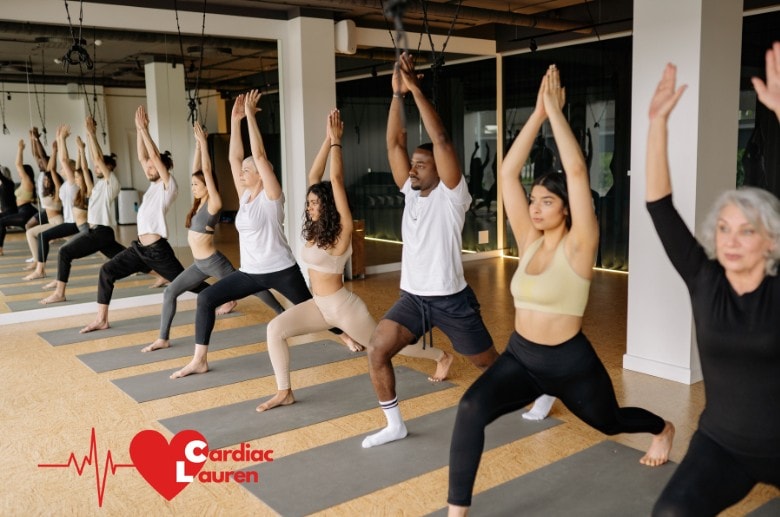
More reasons for being active and exercising
There are more good reasons of why we try and get you exercising and be more active.
When you exercise, you get this hormone release, these endorphins, that feel good factor, serotonin starts going round to your body and so you feel really good after exercise and that is what motivates you to keep going, get out of that chair, start mowing of the lawn and things like that.
When you exercise more regularly, your confidence improves as well. You are also reducing your anxiety and stress levels.
You have better weight control when you exercise more regularly and what I mean by that is that you gain good kilos, so muscle around your body, and you lose bad kilos, which is fat and things like that around your body.
You have less fatigue and you are more likely to have a better sleep pattern because you are physically tired at the end of the day.
So they are just some of the reasons, I really could be here all day talking, about why exercise and activity is good for you. But that just gives you an idea of why we try and promote activity, general exercise, and get the heart and the lungs going on a regular basis.
Cardiac Lauren & being active and exercising
In Cardiac Lauren there is a large range of different themed and intensity level classes which cater for a beginner all the way to a regular exerciser. Being active and exercising is important to maintain our health and keep the body moving so we work on strength, mobility and balance as well as cardiovascular exercises.
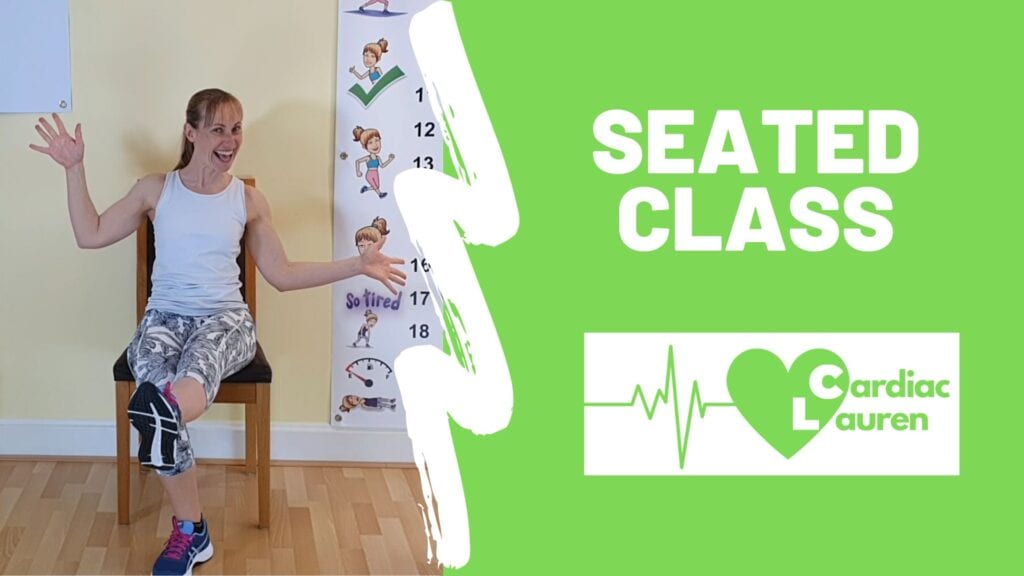
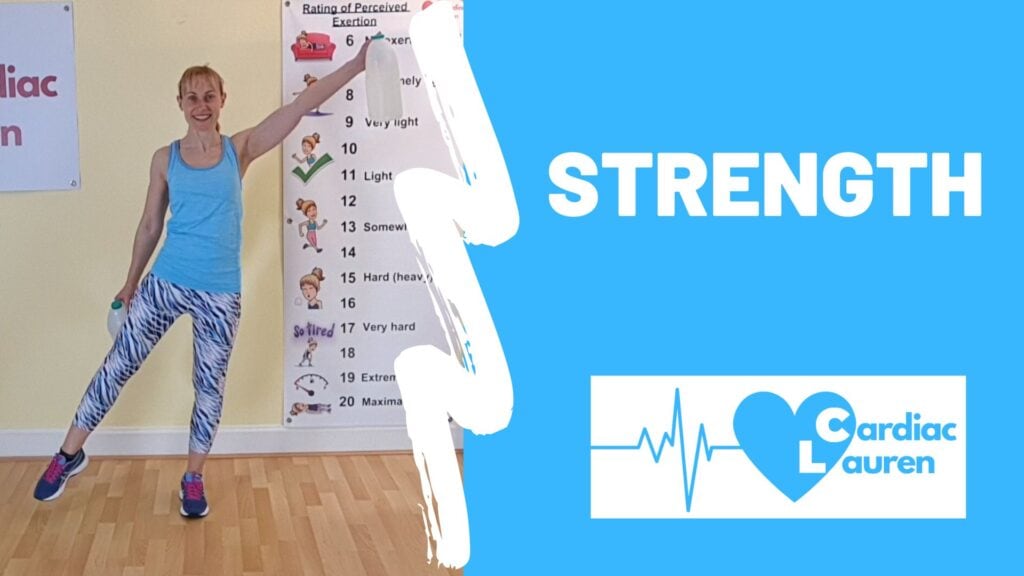
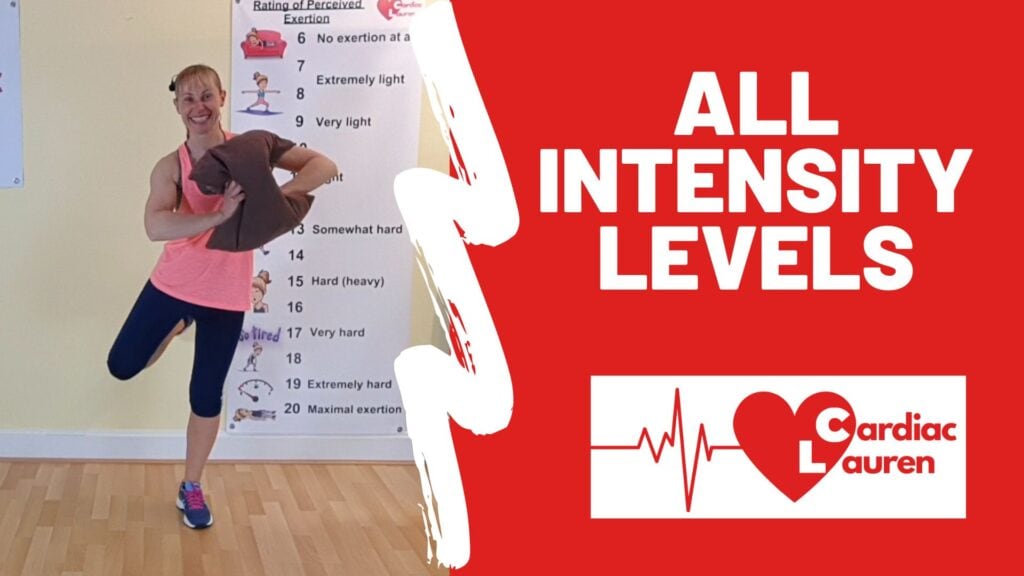
The UK adult exercise guidelines – here.
9 tips for immediately reducing your stress levels
Stress is an all-too-common companion to the average person in this day and age, with a faster-paced world being the culprit behind our rising cortisol levels. While humans need some cortisol – or stress – to ensure that they are productive and keep ‘moving forward’, excessive stress can be damaging to our health, in all areas from headaches, digestive problems, muscle pain and your heart health.
While we need to understand what triggers our own personal stress and find long-term strategies for managing it, it is beneficial to know how to stop unexpected stress in its tracks. Here, we can use short-term relief to prevent a ‘snowball’ effect of stress – i.e. the problem compounding as more stress is added.
Here are 9 strategies for the immediate reduction of stress.
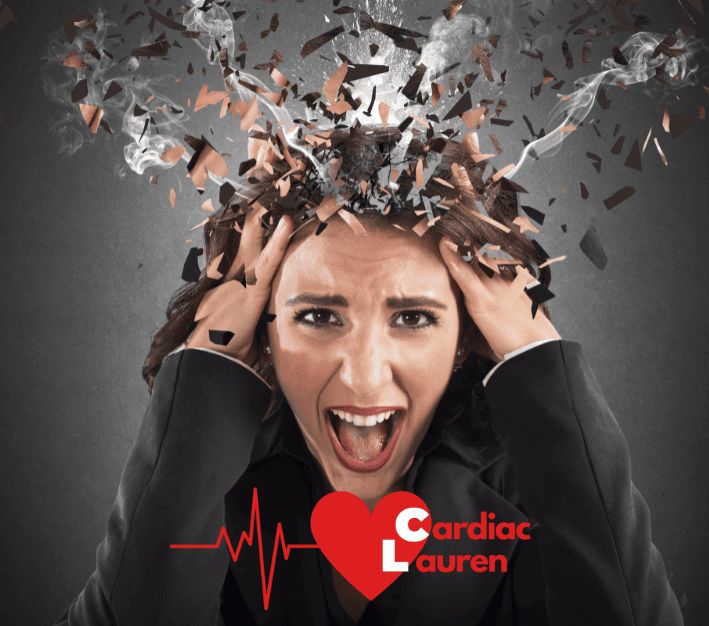
1. Recognize that you are stressed
It may be surprising that many people do not realise that they are stressed. Despite the body communicating its stress – such as muscle tension, cramping and aching – many people either ignore or don’t notice these symptoms, or pass them off as something else. Identify stress by pausing for a moment and observing the body; do you have muscle aches or a headache? Is your breathing shallow – a sign that you are not calm and relaxed – and do you feel irritable, tense or overwhelmed?
The first step is to identify stress, and possibly what has triggered it so that we can open-mindedly apply the following reduction techniques.
For more information about the symptoms of stress, see the webpage here by the organisation Mind.

2. Slow your breathing
Slowing your breathing can help reduce stress by activating the body’s relaxation response and promoting a sense of calm. Here’s how it works:
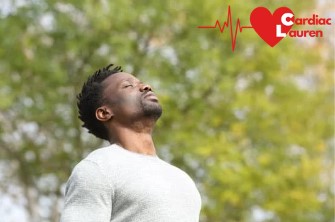
When you slow your breathing, it helps to balance your nervous system and decrease your heart rate and blood pressure, which are often elevated during times of stress. It also leads to increased oxygenation, which also has a soothing effect on the body.
Try this technique – Counting 4-6 seconds, take a deep breath in and imagine that you are filling up a balloon slowly. Once you’ve sucked up all the air, gently release it, (again counting between 4-6 seconds) unless all the air is emptied out into the bottom of your lungs. Repeat for a few minutes and notice how you feel.
3. Have a laugh
Laughing reduces stress by triggering the release of endorphins, which are “feel-good” hormones that promote pleasure and relieve pain. It also activates the relaxation response, reducing the production of stress hormones like cortisol and adrenaline.

So lighten up a little and look for an opportunity to be silly or playful with someone, or perhaps watch your favourite goofy TV programme or a funny video.
4. Tune in to the senses
Animals are much better at using their senses than humans, but it can help to pause and tune in with our surrounding stimulus. This activity promotes grounding and relaxation. Keep your eyes open and focus on something you can see. ‘See’ or contemplate it for a moment, and then close your eyes and focus on one thing you can hear. Keeping your eyes closed, go through the remaining senses of touch, smell and taste, to help bring you into the present moment.
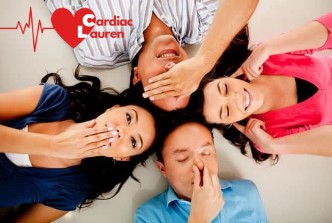
Equally, try to make it a habit in your daily life to engage more with your senses. For example, consciously smell and taste the ingredients you are using to cook dinner or listen to the sound of cups clinking in a coffee shop.
5. Hug someone
We should be giving more bear hugs! Human contact is an automatic stress reliever and it actually releases oxytocin, also called “the bonding hormone,”. By giving someone a warm embrace, not only will you feel instantly better, but the person you’re hugging will do too.

Also, the physical contact involved in hugging can have a positive impact on your immune system. Studies suggest that hugging can stimulate the production of white blood cells, which help protect the body against infections and diseases.
6. Progressive muscle relaxation
Progressive muscle relaxation (PMR) is a relaxation technique that involves systematically tensing and then relaxing different muscle groups in the body. Here’s how it typically works:
Find a quiet and comfortable environment where you can relax without distractions.
- Start with a deep breath in and exhale slowly to begin the relaxation process.
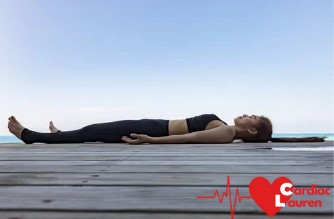
2. Begin by focusing on a specific muscle group, such as your face (you may wish to start at the ‘top’ of the body and work your way down). Tense the muscles in that group as tightly as possible for a few seconds, then release the tension and let the muscles relax completely.
3. Pay attention to the sensations of relaxation and the contrast between tension and relaxation in the muscle group you just worked on.
4. Move on to the next muscle group, gradually working your way through different parts of the body, such as the arms, shoulders, chest, abdomen, legs, and so on.
5. Continue the cycle of tensing and relaxing each muscle group until you have gone through the entire body, for example, if you started with the face you may end with your feet. Observe the difference in your body after this exercise, and you should feel noticeably less stressed.
There are a range of relaxation videos available in Cardiac Lauren that you can participate in.
7. Listen to music.
Music has a unique link to our emotions and releases endorphins – the feelings of pleasure we also get from exercise – in the brain. The first thing music does is trigger a relaxation response in your body. It’s like a gentle lullaby for your nervous system. Soothing music is the best for stress relief. As you listen to slow-tempo melodies and soothing rhythms, your heart rate slows down, your blood pressure eases, and your tense muscles start to loosen their grip. Give it a go!

8. Move
Many people shut down when they are stressed and it can be hard to pull themselves out of this state.

Movement is an immense help here, as even a quick burst of activity releases endorphins, distracts from stressful thoughts and triggers and boosts your mood and self-confidence.
Why not go for a brisk walk, dance to music, lift some heavy objects around the house or simply take time to stretch all of your limbs and muscles.
9. Talk about yourself in the third person
Our last stress relief tip may sound a little peculiar, but thinking in the third person (“Joan is going to have a nice cup of tea after this”) is like stepping back and observing a situation from a bird’s-eye view. It can reduce feelings of being overwhelmed and help a person gain perspective on a situation.

It can also be useful to try what is known as ‘self-soothing’ too – i.e. using your internal voice to calm, support and soothe yourself during stressful times. This is something that our parents did during our childhood, which helps to regulate our nervous system and calm us down. In this way, self-soothing and positive self-talk can be very effective.
Committing to making stress relief a habit
Although all of these tips may help with stress in the short term, plan to build stress relief tools into your everyday routine. For example, look at your day-to-day life and try to identify when you feel stress – even low-level stress, such as commuting. Once you have identified the stress triggers, commit to using techniques to try to reduce stress at these times. It may be taking 5 minutes to do deep breathing on the bus. It may be setting time aside to make a healthy dinner when you get home from work, and making a conscious effort to use all of your senses in the process.
Eventually, your stress reduction techniques will become a habit and you can prevent the likelihood of stress occurring in the future.

Try out these techniques the next time you feel stressed and build up a toolkit of the ones that help you the most. Remember that stress is a natural response, and although it can be overwhelming, you do have the power to control it.
What are the 4 phases of cardiac rehabilitation?
The 4 phases of cardiac rehabilitation refer to the steps and interventions an individual moves through from the immediate diagnosis of a heart condition, through to maintaining a safe, fulfilled and active lifestyle in the long term.
Phases 1-3 of cardiac rehabilitation are finite steps, i.e. the individual aims to graduate to the next phase over time, depending on their progress and medical advice. Phase 4 is intended to facilitate the long-term benefits of consistent exercise while living with a heart condition. Patients build their fitness gradually and safely – to both lower the risk of future heart events and to join a friendly and knowledgeable community of people. There is no ‘completion’ of Phase 4 – it is there to support and engage you in the long term for its mental, physical and social benefits.
What is Phase 1 of cardiac rehabilitation?
Phase 1 refers to the acute stage of the heart condition, and often, it starts from a person’s diagnosis following the heart event. Most cardiac rehabilitation patients will have been admitted to the hospital during Phase 1 – after having had the heart event (myocardial infarction) which may have been called acute coronary syndrome on the discharge notes. During Phase 1, the main goals of recovery are as follows:
- To stabilise the patient so that the symptoms do not worsen
- To prevent further damage to the heart
- To initiate treatments to help the heart muscle recover
The length of Phase 1 rehabilitation depends on the nature of the condition and the extent to which the heart has been damaged. Each person is different, and while one person may respond to initial treatments immediately, others may take longer. It is therefore important to try and be patient while in Phase 1; the lack of control can be frustrating, but the most important thing is that you don’t rush the process.
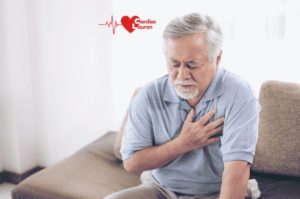
What is Phase 2 of cardiac rehabilitation?
Phase 2 occurs after Phase 1, outside of the hospital setting. It is when patients who have suffered a heart event are discharged from the hospital, return to the care of their GP (General Practitioner) and are thereby classified as ‘outpatients’. However, people who have had surgery, CABG and valve repair or replacements in particular, will have the district or cardiac specialist nurse attend their homes or have appointments with them, so that any lacerations resulting from surgery can be looked after. If you had stents fitted then you will have been given verbal and written information about the early days of your recovery when at home.
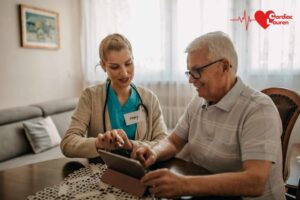
For most Phase 2 patients, discharge summary notes from the hospital will have been forwarded to the local NHS cardiac rehabilitation team and they will make contact by phone. At this initial contact, the patient will be able to ask questions and get advice about taking pain relief, what joint mobilisation and muscle stretches to do, and how to cope with things like coughing or sneezing after having a sternotomy (surgical procedure).
Phase 2 lasts for two to six weeks depending on the heart event or diagnosis. Everyone at this stage will be encouraged to keep moving around the home and start a gradual walking programme. The aim is to achieve 30 minutes of continuous walking daily by the end of the six weeks. For some people, this is easily achievable, whereas others will need longer and their goal may be to just do 10 minutes of activity each day. The cardiac rehab team sees everyone as an individual and will tailor their recovery to each person.
What is Phase 3 of cardiac rehabilitation?
Phase 3 is where you will start a comprehensive cardiac rehabilitation programme, predominantly with your local NHS team. This is different from Phase 2, where you are still recovering, understanding and adapting to your diagnosis.
In Phase 3, education, exercise and support from a multidisciplinary team are put together in a 4–12-week programme. The primary goal of Phase 3 cardiac rehabilitation is to help individuals return to their normal daily activities and improve their overall health and well-being.
Participants may attend organised sessions in their local hospital, medical centre, a local gym, or community hall to receive Phase 3 care. Some attend once a week, others twice, or more. Many people are now offered hybrid programmes of a mix of online and face-to-face classes, as well as phone apps and computer websites to guide them through the whole cardiac rehabilitation process.
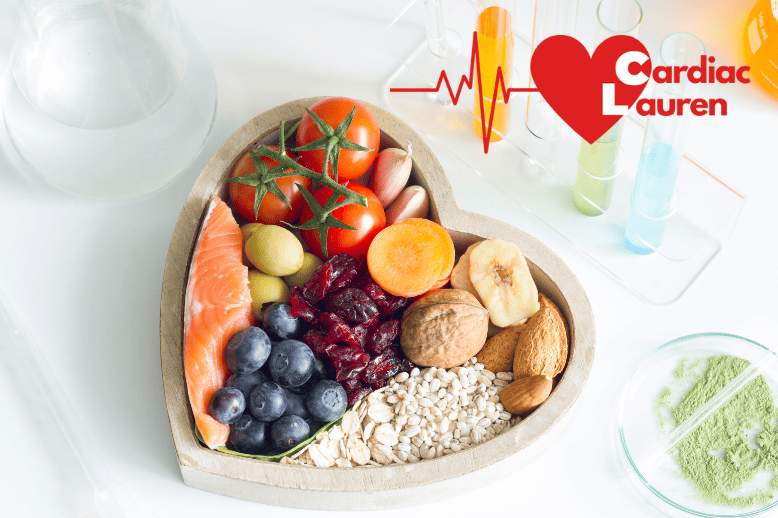
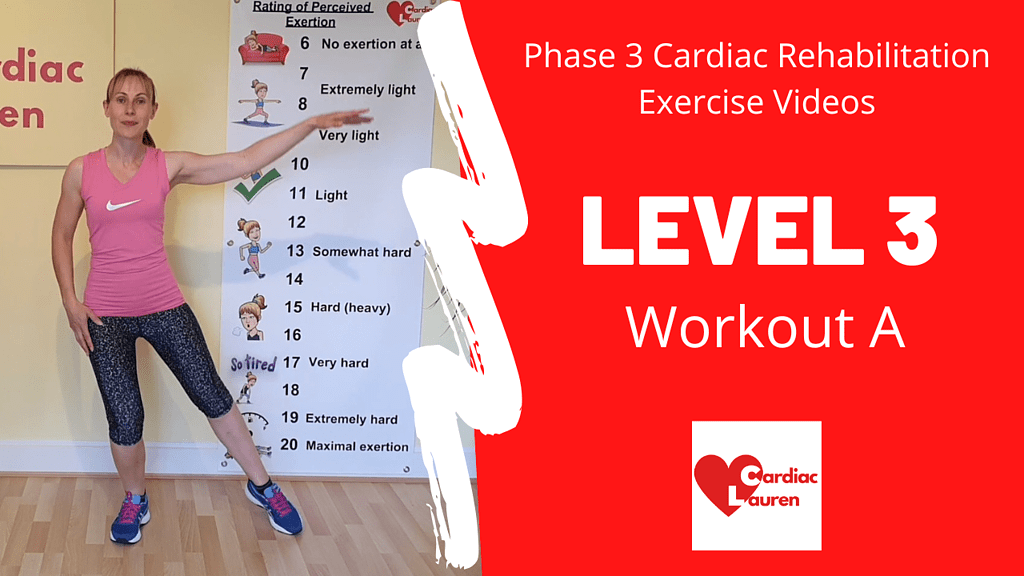

The main aims of Phase III are to:
- Educate you about your condition – why it happened and how to prevent it from happening again.
- Educate and support you on any changes you need to make to your lifestyle – such as diet, stopping smoking, losing weight, exercising more, lowering stress levels, managing blood sugar levels (if you are diabetic) and reducing alcohol intake.
- Support your mental well-being and manage anxiety and stress.
- Encourage you to be more active in everyday life.
- Be able to achieve 20 minutes of continuous cardiovascular exercise.
- Be able to monitor yourself whilst exercising so it remains at a safe intensity level.
- Understand what and why you take the medication you have been given.
- Learn to live with your condition and for it to not be a reason to stop doing many of the things you did before or would like to do in the future.
In terms of exercise, some Phase 3 cardiac rehab programmes are based in a gym or have gym equipment (bikes, treadmills, rowing machines, steppers etc), whilst others will have a circuit format using weights, resistance bands, steps and your own body weight. No method is better than the other, especially as the main aim is to achieve 20 minutes of continuous aerobic exercise, and each participant will be exercising at a different intensity to the other.
At the end of the Phase 3 programme, everyone will have a better understanding of their condition and how to live with it. For most people, apart from having to take medication daily, their lives can continue as before with the new lifestyle changes they have put in place. For some, their condition requires regular monitoring, but this does not mean they cannot continue to progress on their cardiac rehabilitation journey. If anyone is waiting for a medical procedure, being as fit and healthy as possible pre-operation is extremely beneficial and will make recovery a quicker experience.
What is Phase 4 of cardiac rehabilitation?
Phase 4 of cardiac rehabilitation is where the fun starts! Phase 4 is a chance for you to invest in your long-term mental and physical health, in a safe manner considering your history of a heart event.
The Cardiac Lauren philosophy is that Phase 4 improves not just your overall fitness, but your quality of life. Each online class guides people with a history of a heart event through exercises where no gym membership or expensive equipment is needed. In fact, the most you will need is a chair and milk cartons if you don’t own any lightweights!
There is a diverse range of classes to choose from at Cardiac Lauren, to suit your confidence, ability and mood. You can sample seated classes, high-intensity classes, post-walk classes and many, many more.
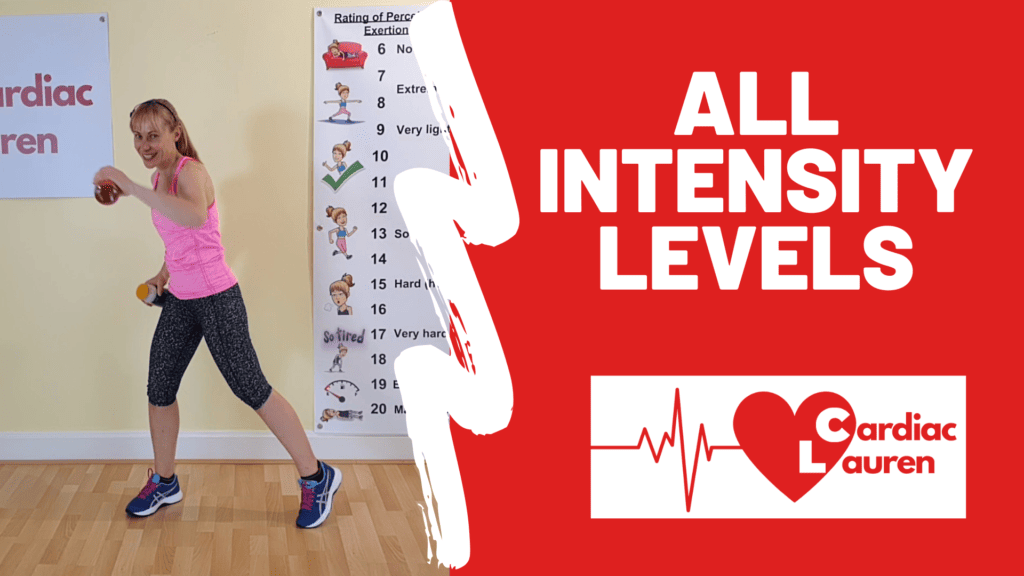
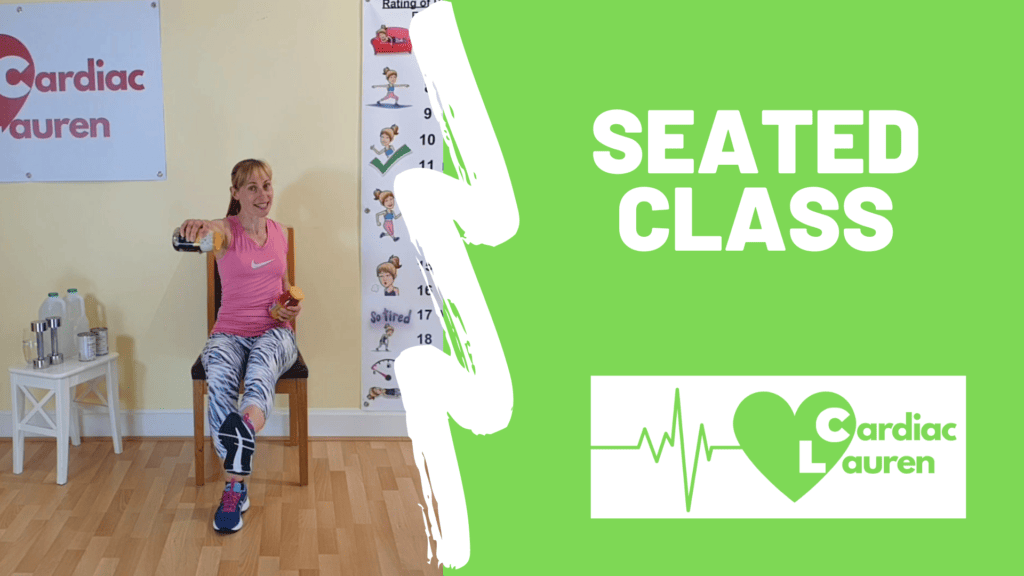
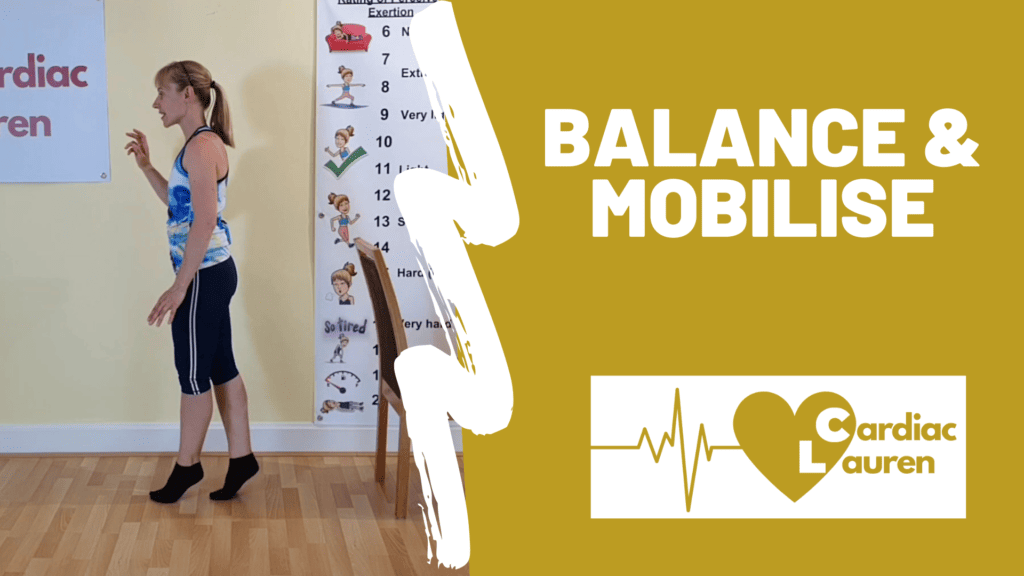
Although some patients may feel anxious about the strain they may be putting on their heart in exercise classes, especially as they challenge themselves to harder exercise, however, Cardiac Lauren’s classes make use of RPE, which stands for Rating of Perceived Exertion (you are likely to have used this in Phase 3).
RPE is a subjective measure of how hard someone feels they are exercising – to help people gauge their intensity level during physical activity. Anywhere between RPE 11 & 14 is generally desired – i.e. ‘fairly light’ to ‘somewhat hard’.
Cardiovascular exercise strengthens the heart muscles, enabling you to feel fitter and stronger in daily life.
Phase 4 should be a fun, accessible and sustainable addition to your life, which enables you to live your life without the frustration and restrictions of your heart event history. It also decreases your likelihood of having another heart event, as your heart adapts to exercise and becomes stronger.
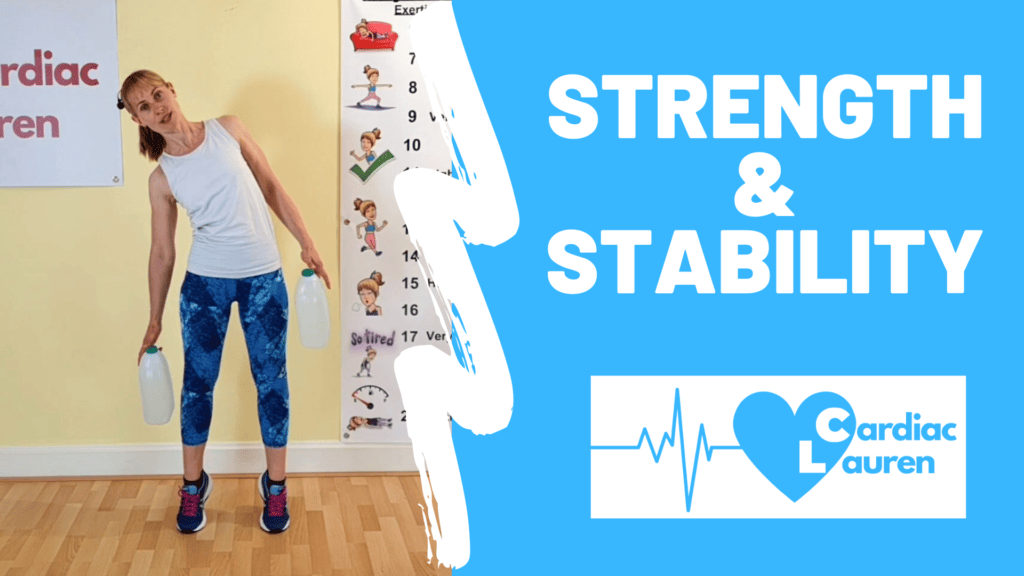
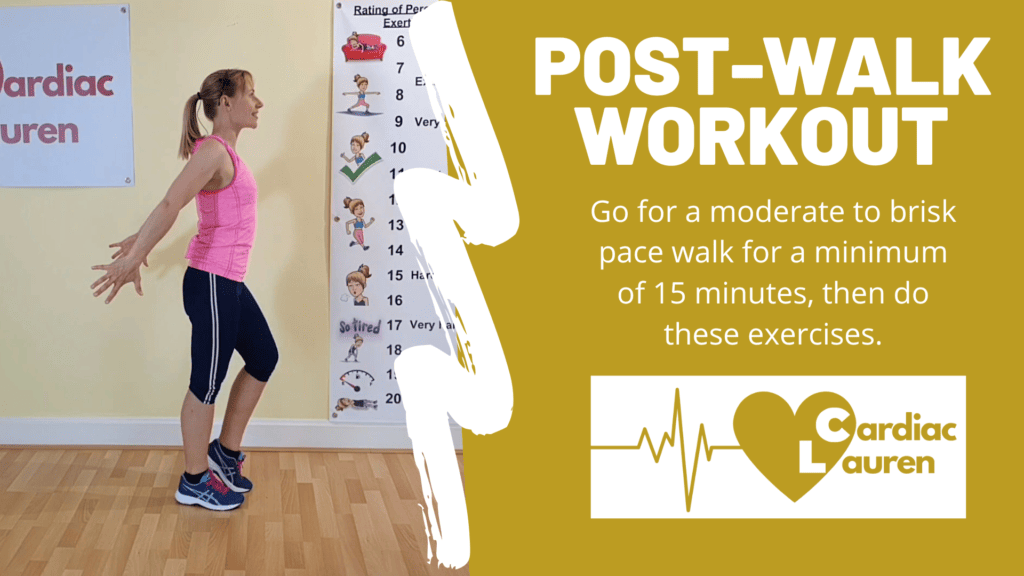
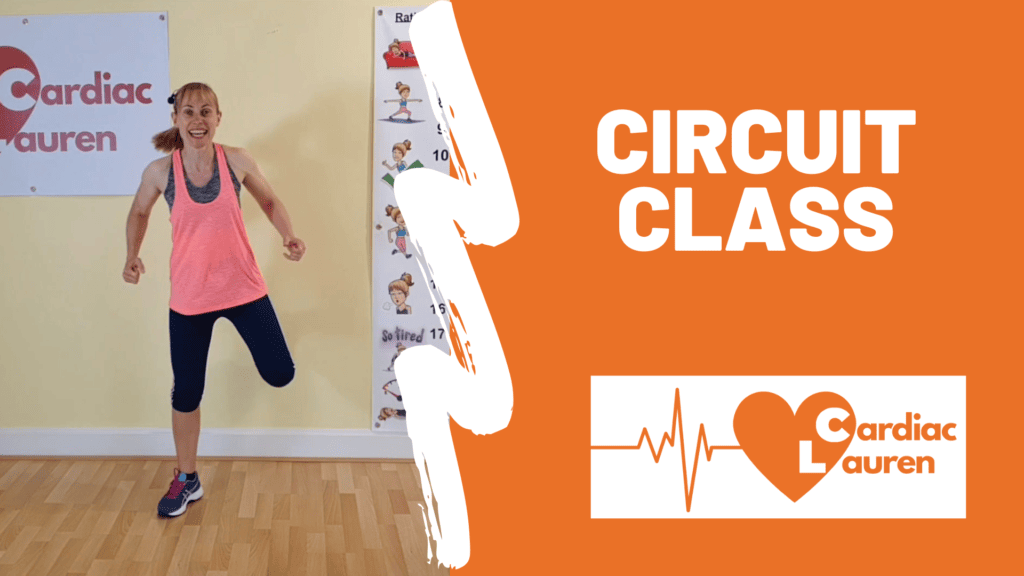
5 delicious mocktail recipes to enjoy a low-alcohol summer
Mocktails are the new cocktails! Find your favourite Mocktail recipe here.
Summer is here and that calls for socialising, be it at weddings, holidays or a simple BBQ in the garden. However, as we all know, socialising also goes hand-in-hand with a tipple or two, and it can often feel instinctual to reach for a cool beer or spritzer on a warm summer’s day…

However, if you are taking control of your heart health, you may want to limit your intake of alcohol. While moderate alcohol consumption has been associated with certain health benefits, it is crucial to recognise that the risks associated with alcohol consumption outweigh the potential advantages.
Alcohol can raise a person’s blood pressure, lead to weight gain and interfere with medications prescribed for heart-related conditions. While some studies have linked a reduction of heart disease to moderate consumption of alcohol, this does not apply to conditions such as stroke and vascular dementia and alcohol is linked to some types of cancer. You can read more about this on the British Heart Foundation website here.
It is, therefore, a good idea to avoid alcohol, or if you do drink, ensure that you do not exceed 14 units a week (about seven small 175ml glasses of average 12% strength wine). While you can switch over from alcohol to sugar-free soft drinks, kombucha or sparkling water with fruit, homemade mocktails are delicious and feel more indulgent at events such as garden parties.
Remember to stay hydrated if you are having alcohol especially if you are planning on joining in with one of the Cardiac Lauren exercise classes!
So, get out your cocktail shaker and enjoy these 5 homemade mocktail recipes, to be enjoyed in moderation.

NB: Monk Fruit sweeteners
In order to keep these refreshing mocktail recipes lower in calories, we suggest using monk fruit sweeteners instead of sugar or syrups. Monk fruit sweetener, also known as monk fruit extract, is a natural sweetener derived from the monk fruit, a small melon-like fruit native to southern China. One of the main advantages of monk fruit sweetener is that it provides a sweet taste without the calories or impact on blood sugar levels. It can be a suitable alternative for those who need or prefer to limit their sugar consumption.
It is important to note, however, that monk fruit is much sweeter in taste than sugar, and therefore smaller quantities are needed.
Feel free to adjust the sweetness or tartness of these recipes to suit your taste preferences.
1. Virgin Mojito
Ingredients:
- 6-8 fresh mint leaves
- 1 lime, cut into wedges
- 1 teaspoon of monk fruit sweetener
- Soda water
- Crushed ice

Recipe:
- In a glass, muddle the mint leaves and lime wedges to release their flavours.
- Add the monk fruit sweetener and crushed ice to the glass.
- Top it off with soda water and stir gently.
- Garnish with a sprig of mint and a lime wedge.
- Serve and enjoy!
2. Strawberry Lemonade Spritzer
Ingredients:
- 1 cup fresh strawberries, hulled and sliced
- 1/4 cup fresh lemon juice
- 1 teaspoon of monk fruit sweetener
- Sparkling water
- Ice cubes

Recipe:
- In a blender, puree the strawberries, lemon juice, and monk fruit sweetener until smooth.
- Fill a glass with ice cubes and pour the strawberry mixture over the ice.
- Top it off with sparkling water and stir gently.
- Garnish with a strawberry slice or lemon wheel.
- Serve and enjoy!
3. Pineapple Coconut Mocktail:
Ingredients:
- 1 cup pineapple juice
- 1/2 cup coconut water
- 2 tablespoons of lime juice
- 1 teaspoon of monk fruit sweetener
- Pineapple wedge for garnish
- Ice cubes

Instructions:
- In a shaker, combine pineapple juice, coconut water, lime juice, and monk fruit sweetener (if desired).
- Shake well to mix the ingredients.
- Fill a glass with ice cubes and strain the mixture into the glass.
- Garnish with a pineapple wedge.
Serve and enjoy!
4. Cucumber Mint Refresher:
Ingredients:
- 1/2 cucumber, sliced
- 8-10 fresh mint leaves
- 1 tablespoon of lime juice
- 1 teaspoon of monk fruit sweetener
- Soda water
- Ice cubes

Recipe:
- In a blender, puree the cucumber slices, mint leaves, lime juice, and monk fruit sweetener until smooth.
- Fill a glass with ice cubes and pour the cucumber mint mixture over the ice.
- Top it off with soda water and stir gently.
- Garnish with a cucumber slice and a sprig of mint.
Serve and enjoy!
5. Watermelon Basil Cooler:
Ingredients:
- 2 cups of watermelon, cubed
- 4-5 fresh basil leaves
- 1 tablespoon of lime juice
- 1 teaspoon of monk fruit sweetener
- Soda water
- Ice cubes
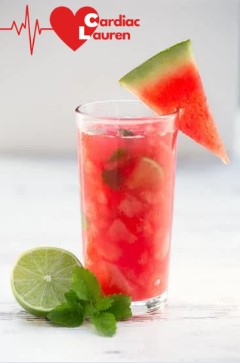
Recipe:
- In a blender, blend the watermelon, basil leaves, lime juice, and monk fruit sweetener until well combined.
- Fill a glass with ice cubes and pour the watermelon-basil mixture over the ice.
- Top it off with soda water and stir gently.
- Garnish with a basil leaf or a small watermelon wedge.
Serve and enjoy!
So there you have it: 5 alcohol-free cocktails to keep you cool and refreshed this summer. Remember that unless you have been instructed by your doctor, it is fine to occasionally indulge in alcohol… but for now, cheers to these tasty, non-alcoholic ‘tipples’!
How Long To Walk A Mile?
Walk a mile – What does it mean to you? Are you on your own, walking a dog, in a social group or on a Charity walk?
Walking is one of the more popular ways people use for general activity due to its health benefits and it is a great way to maintain physical health and a healthy weight. We all need to stay active and improve our fitness level so working out how long it takes to walk one mile is a great start.
Some people like to have a walking goal, others like to walk the same distance and route, some join walking groups where women and men walk and chat so it is a more social occasion, whilst other regular walkers may do distances of a half marathon or more!

How often should I walk?
For those who have experienced a cardiac event, the advice is to walk at a slow pace for a short period of time and gradually build up to a moderate walking pace once they are in Phase 2 Cardiac Rehabilitation and at least by the time they are starting Phase 3.
Everyone should stay active and aim for a 30-minute walk daily no matter what the pace, and to try and make it continuous, although some people may need to stop and rest. Over time as their endurance increases and physical health improves, their average walking speed will increase and they may be able to get to a brisk pace.
Some people will do formal exercise on 2-3 days in the week (for example, tennis, swimming, cycling, gym or Zumba) and so will not walk on those days, but will still need to go out and walk on the other days of the week.
How long does it take to walk 1 mile?
Typically it takes between 14 and 22 minutes for a healthy individual to walk one mile, but we all know we have different walking speeds, walking goals, fitness levels, and health issues so some people may go faster, whilst others are slower or even need breaks during the one mile.
The best way to monitor yourself when walking is the RPE Scale (Rating of Perceived Exertion). Walking is classified as a low-intensity exercise, or more often as an activity, as most people can walk without getting breathless for a period of time. Therefore on the Borg 6-20 RPE Scale, walking is around RPE 9-11 ‘very light’ to ‘fairly light’. The way in which it becomes ‘exercise’ is when it is at a faster pace and they become slightly breathless and it is around RPE 11-13 ‘fairly light’ to ‘somewhat hard’. You can watch a video explaining the RPE Scale here.
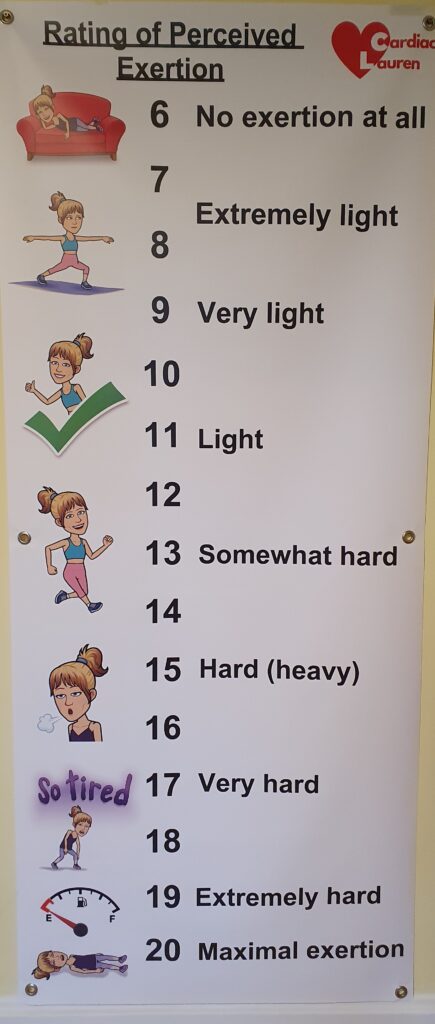
How many miles a day should I walk?
In the UK, adults should achieve 150+ minutes of moderate-intensity exercise each week and be as active as they can the rest of the time. As mentioned before, going for a walk is not necessarily exercise, but more like activity, so any walking is beneficial to your health. The longer distances you walk the better for your overall health.
When people get into the habit of regular walking they will start to walk further and walk faster and bring down their average walking speed and average time to get to the shops or walk a mile. They will feel fitter and will have improved their muscle tone and cardiovascular fitness so will find they start to move from the ‘activity’ stage into the ‘exercise’ zone and it can count towards their weekly exercise target.
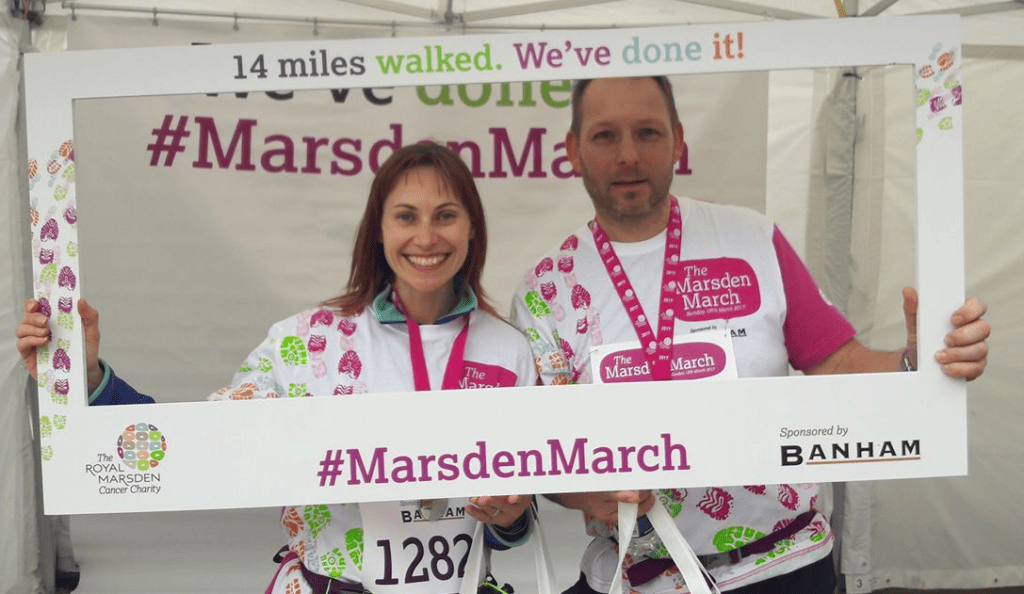
Some people need a goal to work towards and this is where Charity walks are perfect. Local to Cardiac Lauren is the Marsden March which is either a 14-mile route between the two Royal Marsden Cancer Hospitals in Chelsea, London and Sutton, Surrey, or a shorter 5-mile route. Lauren actually completed it in 2017 as both her mother and sister had cancer treatment and operations for Breast Cancer. The data gathered from her walking app on the day shows she:
- completed 14.21 miles
- it took 3 hours and 40 minutes
- her average walking pace per mile was 15 mins 30 seconds
- she took 29,265 steps
- and burnt 901 calories!
Most people would not walk at this fast pace and will use a charity walk as a walking experience, but it goes to show you can go for a long walk at a good walking pace and get fit at the same time.
Therefore everyone will walk a different number of miles every day, but the average healthy person should aim for 2-4 miles.
How many miles is 10,000 steps?
This will depend on your stride length, so shorter strides will be fewer miles, whereas longer strides will be more miles. For the average stride of 2.1-2.5 feet, it is around 4 1/2 – 5 miles.
Cardiac Lauren likes to use a walking app when she decides to go out for a purposeful walk so she can compare her walking paces. On a good day, she will walk at a 14-minute mile pace which for some people will feel like they are race walking and in 1 hour of walking achieve almost 9000 steps – a distance of 4.4 miles. Whereas, on some days when she walks at a moderate pace, she can do the same number of steps, 9000, and only travel 3.7 miles at an average walking speed of 21 minutes a mile.
Is walking 30 minutes a day enough exercise?
This will depend on a couple of factors.
Firstly, do you do any other formal exercises in the week?
Cardiac Lauren members are encouraged to participate in the online exercise videos 2-3 times a week in order to improve their overall health and fitness levels, especially as they are designed to work the upper body too. This also means they are achieving around 90 minutes of their 150-minute moderate-intensity exercise target.
When you walk, you are only using your leg and buttock muscles, as well as your heart and lungs, but you rarely need to use your upper body, unless you are Nordic Walking. Therefore, walking should be incorporated into a weekly exercise regime of formal exercise and non-formal e.g. walking or housework, to achieve enough exercise.
One of the themed classes in Cardiac Lauren is Post-Walk Workout so you can mix the two activities on the same day!
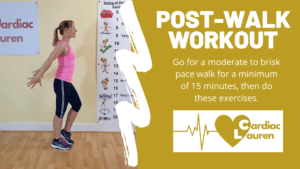
Secondly, what is your average pace/intensity level when walking?
This matters as walking at a slower pace means that you are being active whereas if you are walking up hills, walking on uneven terrain rather than the same terrain as a pavement, you will be working harder and getting into your ‘exercise zone’. A brisk walking speed will take you into the ‘exercise’ zone too so that could count towards your 150+ minutes of exercise a week.
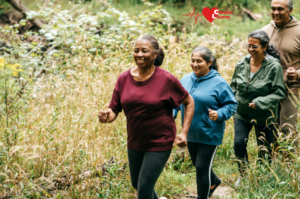

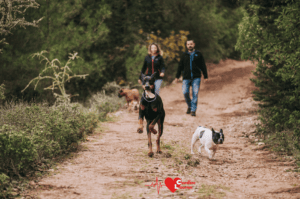
How many steps equal 1 mile?
For the average person, to walk a mile it will take between 2,000 and 2,500 steps.
Why don’t you go and find out how long it will take to walk a mile? Use a walking app on your phone or measure a mile on Google Maps, go out for a walk and time yourself.
Is walking 2 miles a day good for your heart?
There are many health benefits to walking on a regular basis and these include:
- reducing your risk of experiencing a cardiovascular event
- improving your mental health
- better balance
- improved cognitive function
- helping you achieve an upright posture
- reducing body weight and general weight loss
- increasing your metabolic rate thus improving the number of calories burned each day
- increasing fitness levels and aerobic capacity
- reducing high blood pressure
Remember the heart is a muscle and like every other muscle in the body it will get stronger and improve its function the more it gets used. Therefore, by increasing your walking speed and walking further, say two miles rather than just one mile, you will have made your heart beat harder and faster for a longer period of time and thus making it stronger and more efficient at its role in keeping you fit and healthy.
Is It Better To Walk Faster Or Longer?
It depends on what you would like to achieve long term. After having a heart event you are encouraged to start walking daily and achieve 30 minutes of continuous walking by at least 6 weeks. If you normally walk short distances, then increasing your pace and walking faster will be your main aim so you can get to places quicker.
I found myself taking longer to get to the newsagent in the morning to pick up my paper and I put it down to getting older. I had a heart attack and a stent put in and I now can walk to the shops 5 minutes quicker than before!
John
Some people like to increase their walking speed and challenge themselves each time they go out. Cardiac Lauren always likes to power walk and tries to walk a mile in under 15 minutes! This means she has an average walking speed of 4 miles per hour. Many of you will see this as a brisk walking pace which is not achievable but it is important to find your own walking pace and try and stick to it.
If walking is one of your hobbies and you prefer to walk long distances, then this is what you need to aim for. Start off with short walks, then start doing loops so you can stay close to home in case you need to stop sooner than you think. When you know you can go further add that as an option (you may want to go near a bus route so you know you can always get home easily). Try and go a bit further each week and you will find your leg muscles will get stronger with each walk, and your general fitness level will improve so you can go for miles and miles at a time.
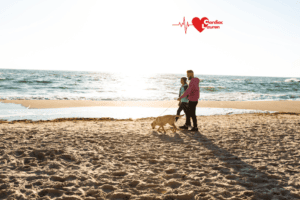
Walking Tips
- Walk to the shop to get your morning paper or milk. If the shop is quite close then go to the next shop further up the road.
- When using the bus, get on the bus a stop later than normal and get off the bus a stop earlier.
- Try and keep walking continuously when taking your dog for a walk. If it is mainly stop/start then you cannot count this towards your ‘exercise’ target.
- Change where you walk each time you go out to keep it interesting. If you are limited, then try and alternate walks – turn left out of your house or turn right.
- Drive somewhere different and go for a walk.
- Walk up hills and steps! Try not to avoid them and remember to keep your feet moving when you get to the top so you don’t get lightheaded!
- Make your walk as continuous as you can.
15 easy food swaps that are healthier for your heart
When it comes to promoting good heart health, the decisions that we make around food are paramount. While eating a varied diet is beneficial for our health, it can help to take a closer look at the separate components of certain meals and recipes, and always consider healthier options. Making healthier food swaps is easy and will go a long way in making your heart stronger, so have a read of our smart switch ideas and update your cupboards accordingly!
Here are your 15 food swaps for a healthy heart:
1. Replace Full-Fat Dairy with Low-Fat or Non-Dairy Alternatives
Switch from full-fat dairy products to low-fat or non-dairy options like skim milk, low-fat yoghurt, or plant-based alternatives such as almond milk or soy milk. There’s a huge variety on the shelves these days, and plant-based milks are better for the planet.
2. Swap Minced Beef For Lentils
Minced beef – and other associated red meats can be high in fat. Due to their size and texture, lentils are a great substitute for minced beef and are a rich source of magnesium and fibre which promote heart health.
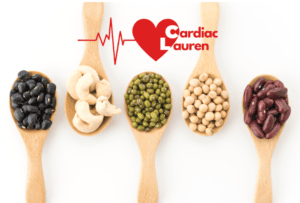
3. Choose Whole Grains over Refined Grains
Opt for whole grain alternatives like whole wheat bread, brown rice, quinoa, or whole grain pasta instead of refined grains to increase fibre intake and support heart health.
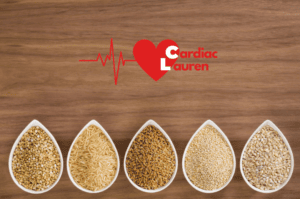
4. Replace High-Sugar Desserts with Dark Chocolate
Instead of indulging in high-sugar desserts, enjoy a small piece of dark chocolate (with at least 70% cocoa content) that contains beneficial antioxidants and flavonoids.
5. Replace Butter with Healthier Fats
Substitute butter with healthier fats like olive oil or avocado oil when cooking, or use spreads made from olive oil or avocados for a heart-friendly option. Avocados are 60% monounsaturated fats, which research says helps to lower blood pressure and protect against heart disease.
6. Ditch Sugary Cereal
Aim to avoid sugary cereal and be sceptical of brands that merely describe themselves as healthy. For example, granola often uses marketing phrases such as ‘high protein’ and ‘natural’, yet the product actually contains a lot of sugar and saturated fat. Healthier breakfast alternatives include porridge, muesli and shredded whole-grain cereal.
7. Switch Muffins and Cakes for Malt Loaf
A healthier option to cakes and muffins is a slice of malt loaf or a fruited teacake, which are lower in fat and sugar than their higher calorie counterparts. Brands such as Soreen are good, but it’s always better to make your own when you fancy a treat.
8. Say No to Fizzy Drinks, and Choose Tea and Coffee Instead
Fizzy drinks contain huge amounts of sugar and should only be consumed as a treat. Instead, opt for water, black or green tea or coffee. These beverages contain clever chlorogenic acids, which protect the heart against cell damage associated with heart disease. Remember: drink caffeine in moderation and watch out for sugary, high-fat drinks from coffee shops.
9. Opt for Salmon over Steak
Red meat is no good when it comes to keeping your heart healthy, so swap your steak fillet for a salmon fillet next time. Due to its high omega-3 and fatty acid content, salmon can help lower cholesterol levels, reduce artery inflammation and maintain blood pressure levels.
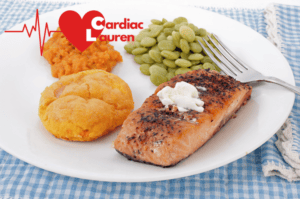
10. Swap White Sides for Green
The next time you’re considering a side dish, or ordering one from a restaurant, choose green dishes over white ones, such as bread, potatoes, chips or rice. Instead, opt for vegetable sides such as grilled artichoke, broccoli or a well-seasoned side salad. See ideas more ideas here.
11. Try Sweet Potatoes
Sweet potatoes are delicious, and contain more vitamins and antioxidants than white potatoes. These include beta-carotene and vitamin C, which reduce inflammation associated with heart disease.
12. Switch from Ice Cream to Greek Yoghurt
We all know that ice cream should only be an occasional treat. Next time you fancy it, try a bowl of Greek yoghurt with a small drizzle of honey, berries or chia seeds. The high protein of Greek yoghurt content supports muscle growth and promotes satiety, making yoghurt a satisfying snack or breakfast option.
13. Ditch Tinned Soup
Canned soups often contain high levels of sodium as a preservative and flavour enhancer, as well as more sugar and fat than fresh alternatives. Take control of your salt, sugar and fat intake by making your own soup. It’s easy, and recipes can be found here.
14. Poach your eggs, don’t fry!
Fried eggs require oil, and therefore are higher in fat than poached or boiled eggs. Poached eggs are delicious on toast or as part of a low-carbohydrate breakfast. Just remember to go easy on the salt!
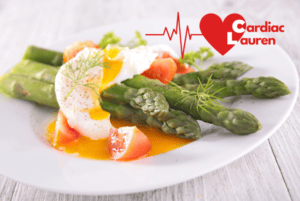
15. Eat the Whole Fruit, Not the Juice
Fruit juice loses fibre and many nutrients such as antioxidants during the juicing process. It also contains very high amounts of sugar. On the other hand, eating whole fruit – say, an orange rather than a glass of orange juice – gives you more nutrients and makes you fuller for longer.
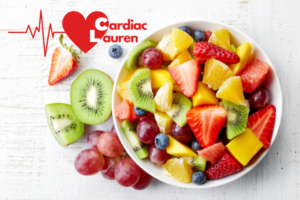
While some treats and snacks can be enjoyed in moderation, these healthy food swaps will lead to greater vitality and support your heart health. Even if you don’t make these changes overnight, try a few of them out and see which ones to add to your meal ideas. Enjoy!
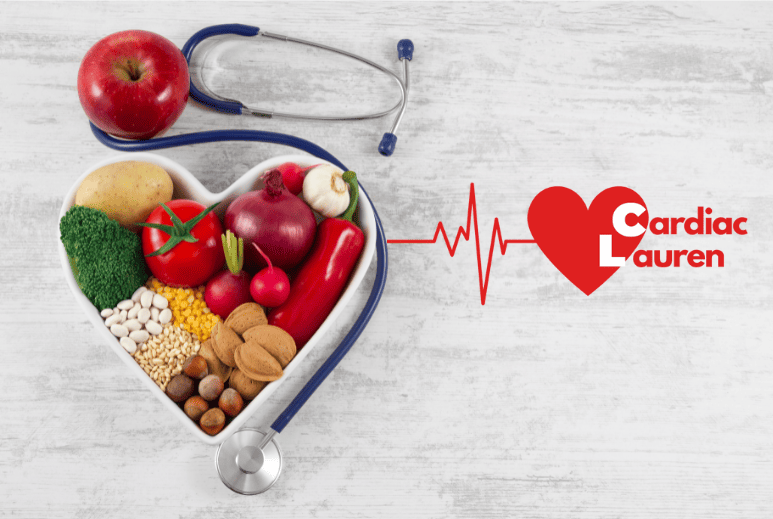
What role does sodium play in heart health and how can I manage my intake?
Sodium – the mineral that is contained in our table salt – plays an important role in our overall health. It is needed in small doses to allow our muscles to contract and relax (otherwise leading to painful ‘cramps’ in our limbs) and maintain the balance of water and minerals in our bodies. It also conducts nerve impulses, so that the body can communicate information effectively and react to stimulus.
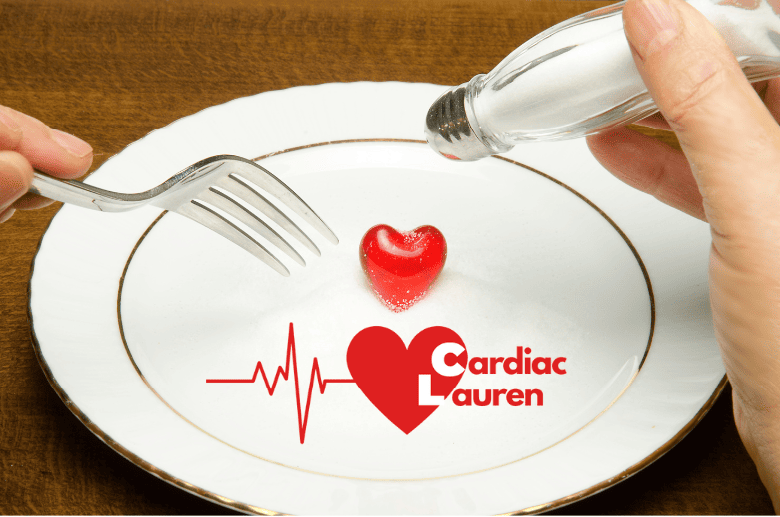
While sodium is a crucial component of our diets, it is important to know that large amounts of it can have damaging effects. Particularly with our heart health, too much sodium can put a strain on this vital organ.
Excessive sodium intake is strongly linked to high blood pressure (hypertension), which is a major risk factor for heart disease. It attracts water, leading to increased blood volume and pressure on the blood vessel walls. Elevated blood pressure puts strain on the heart and can contribute to the development of cardiovascular conditions.
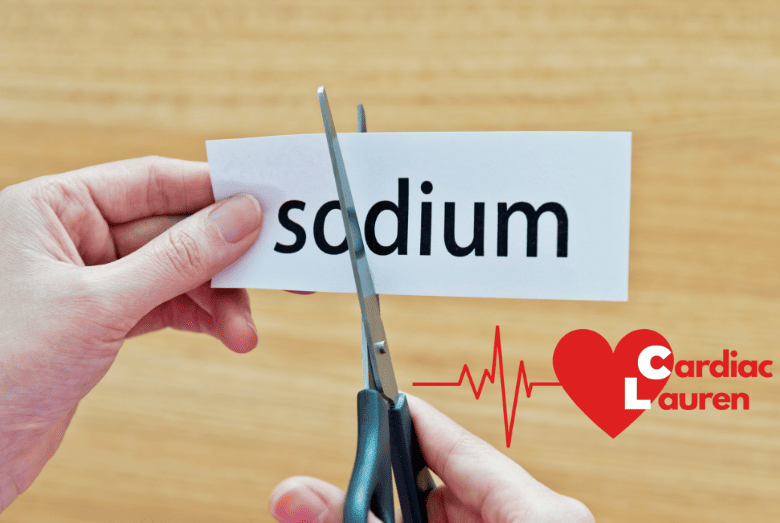
As we have heard, sodium also plays a crucial role in maintaining proper fluid balance in the body. It helps regulate the amount of water inside and outside of cells, which impacts blood volume and blood pressure. However, excessive intake can disrupt this balance, leading to fluid retention and increased blood volume, again, contributing to increased tension on the heart.
Without proper knowledge of how to avoid excessive sodium, it can be difficult to stay away from the high salt-content foods that saturate our supermarket shelves. The World Health Organization recommends an intake of less than 5 grams (approximately 2g sodium) per person per day is recommended by WHO, but many foods, such as microwave dinners, will solely contribute to over half of an adult’s recommended daily intake of salt.
So: how can you manage your salt intake, to ensure that you are staying within a healthy salt limit?
We’ve written 7 top tips on how to banish excessive sodium and keep your heart healthy…
1. Read Labels and Choose Wisely
Start your salt intake management by becoming an informed shopper. Colour-coded nutritional information tells you at a glance if the food has high, medium or low amounts of salt. Opt for low-sodium or reduced-sodium versions of packaged foods whenever possible. Also keep in mind that sodium can hide in surprising places, such as sauces, condiments, and even bread.
2. Cook Fresh, Season Smart
One of the best ways to control your salt intake is by preparing meals at home using fresh ingredients. By cooking from scratch, you have complete control over the amount of salt added to your dishes. Experiment with alternative seasonings like herbs, spices, citrus juices, or vinegar to enhance flavours without relying solely on salt.
3. Limit Processed and Restaurant Foods
Processed foods, including snacks like biscuits; canned soups; and frozen meals, tend to be high in sodium. These convenience foods may be convenient, but they can also be a hidden salt trap. Whenever possible, choose fresh, whole foods over their processed counterparts. Similarly, be mindful when dining out. Many restaurant dishes are notoriously high in salt. Requesting lower-sodium options or asking for sauces and dressings on the side can give you more control over your salt intake.
4. Use Salt Mindfully
While reducing overall salt consumption is essential, you don’t need to completely eliminate it from your diet. Be mindful of the salt you add during cooking or at the table. Use less salt and gradually reduce the amount over time. Your taste buds will adjust, and you’ll begin to appreciate the natural flavours of foods without relying heavily on salt.
5. Boost Potassium Intake
Maintaining a balance between sodium and potassium is vital for healthy blood pressure levels. Increase your potassium intake by incorporating foods such as bananas, oranges, avocados, leafy greens, and potatoes into your diet. Potassium helps counteract the adverse effects of sodium, promoting a healthier cardiovascular system.
6. Be Wary of Hidden Sodium
Some foods that appear healthy can contain hidden sodium. Pay attention to condiments like soy sauce, salad dressings, and pickles, as well as processed meats like bacon, deli meats, and sausages. Choose low-sodium alternatives or consume these foods in moderation to keep your overall sodium intake in check.
7. Hydrate Wisely
Beware of certain beverages that can contribute to excessive sodium intake. Some sports drinks, flavoured waters, and even certain bottled juices may contain added sodium. Opt for water as your primary hydration source and read labels to choose low-sodium options if you’re looking for variety. Always drink water whilst participating in the Cardiac Lauren exercise videos.
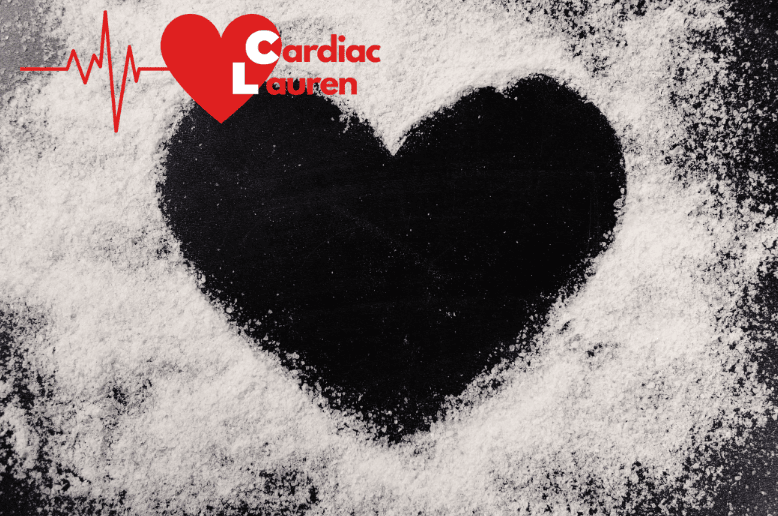
Extra Information on Sodium
If you’re looking for a starting point on low-sodium cooking, the British Heart Foundation have a great range of recipes here.
The website Action on Salt also provides fascinating dissections of common UK brands and supermarket products’ salt levels. One useful article about sauces is here.
Of course, food is to be enjoyed and it is sometimes nice to indulge, however, your heart will thank you for being wiser about your salt intake. We hope that you have found this article useful.
Meet cardiac rehabilitation specialist and ‘Cardiac Lauren’ founder, Lauren Walker
Finding a trusted cardiac rehabilitation specialist with expertise in Phase 1-4 rehabilitation can be tough. You want someone who understands cardiac disease inside and out and can offer you sound, safe advice with sensitivity and reassurance.
Not only that, but many people are also looking for cardiac rehabilitation classes which are accessible to everyone, no matter their age or location.
So where can you find a cardiac rehabilitation specialist who ticks all of these boxes?
Right here.
What are a Cardiac Rehabilitation Specialist’s qualifications?
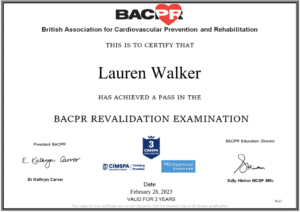
Lauren Walker is a BACPR (British Association of Cardiovascular Prevention and Rehabilitation) qualified cardiac rehabilitation specialist with 18 years of experience under her belt.
BACPR is the Gold Standard in Cardiac Disease qualifications and must be re-validated every 3 years to keep up with modern practice and research (Lauren completed the most recent revalidation in March 2023 with a 97% pass rate).
Lauren’s knowledge includes, but is by no means limited to the anatomy and physiology of the heart and cardiovascular system; the complete cardiac rehabilitation process; medicine and risk stratification; emergency scenario training; and nutrition.
Not only is Lauren an experienced cardiac rehabilitation specialist, but she is also the founder of a successful online exercise community – Cardiac Lauren – where people with a history of various heart events can participate in safe and fun exercise classes from the convenience of their own home.
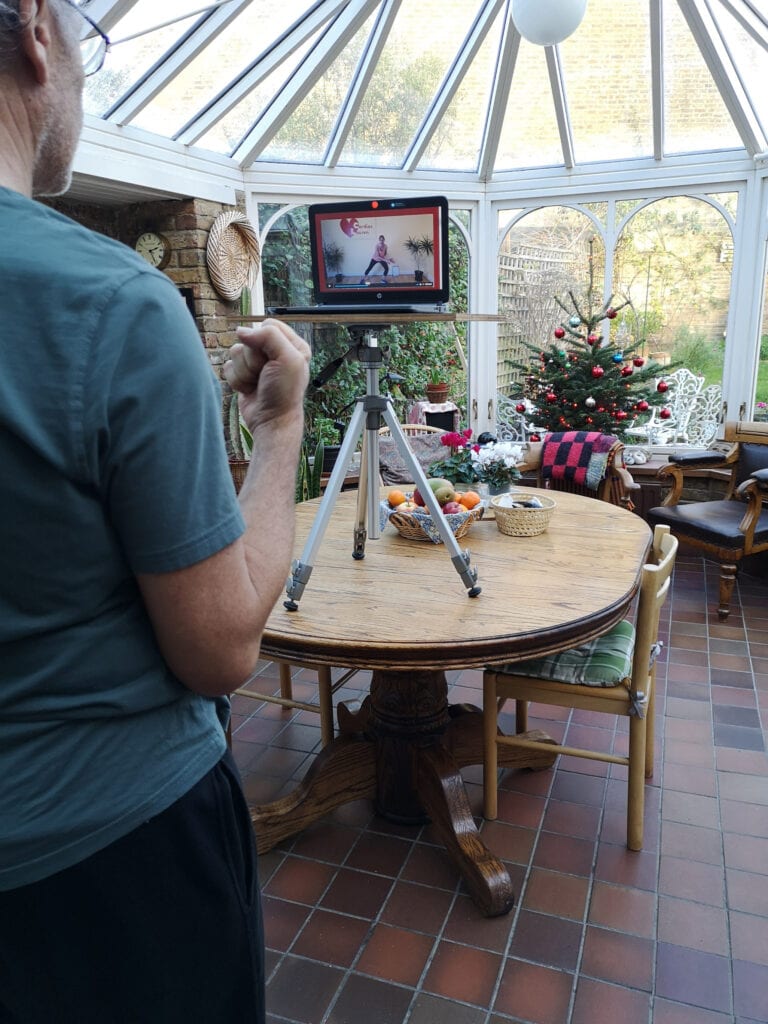
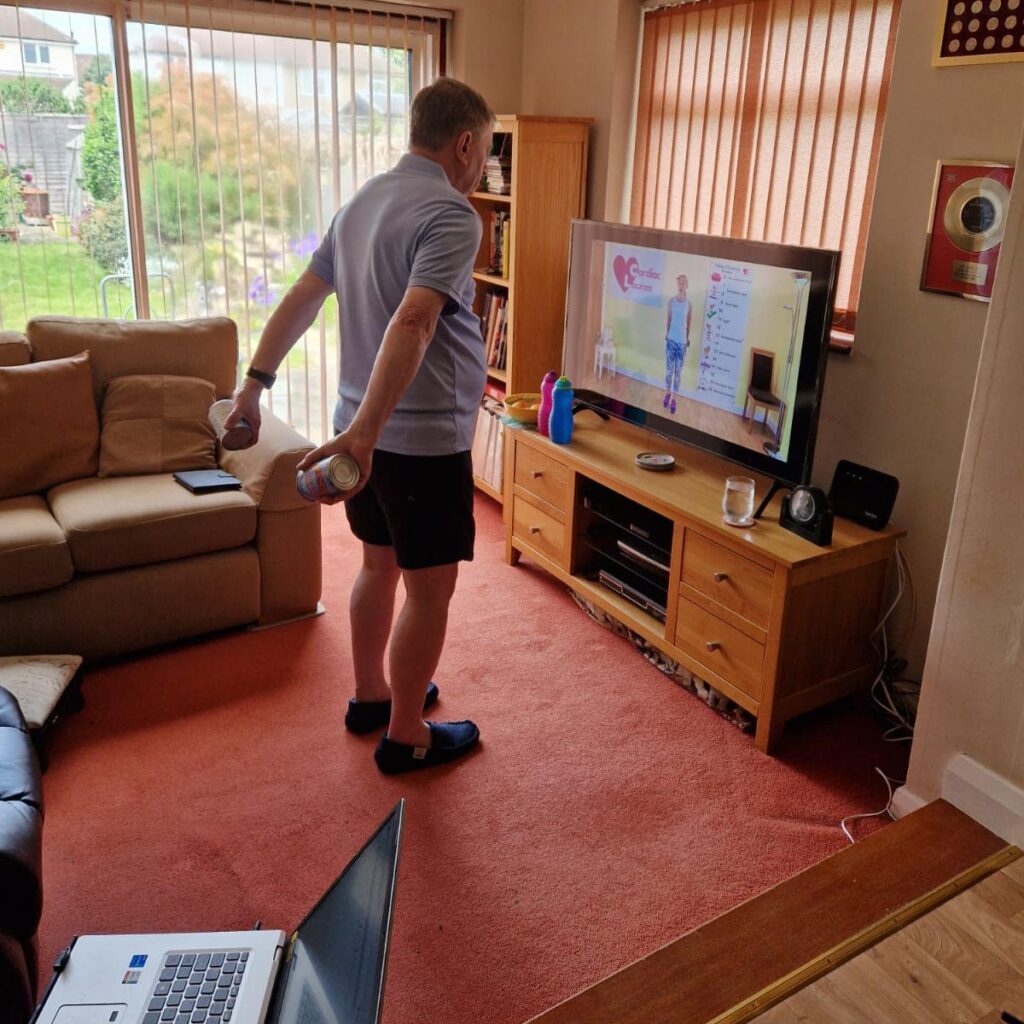
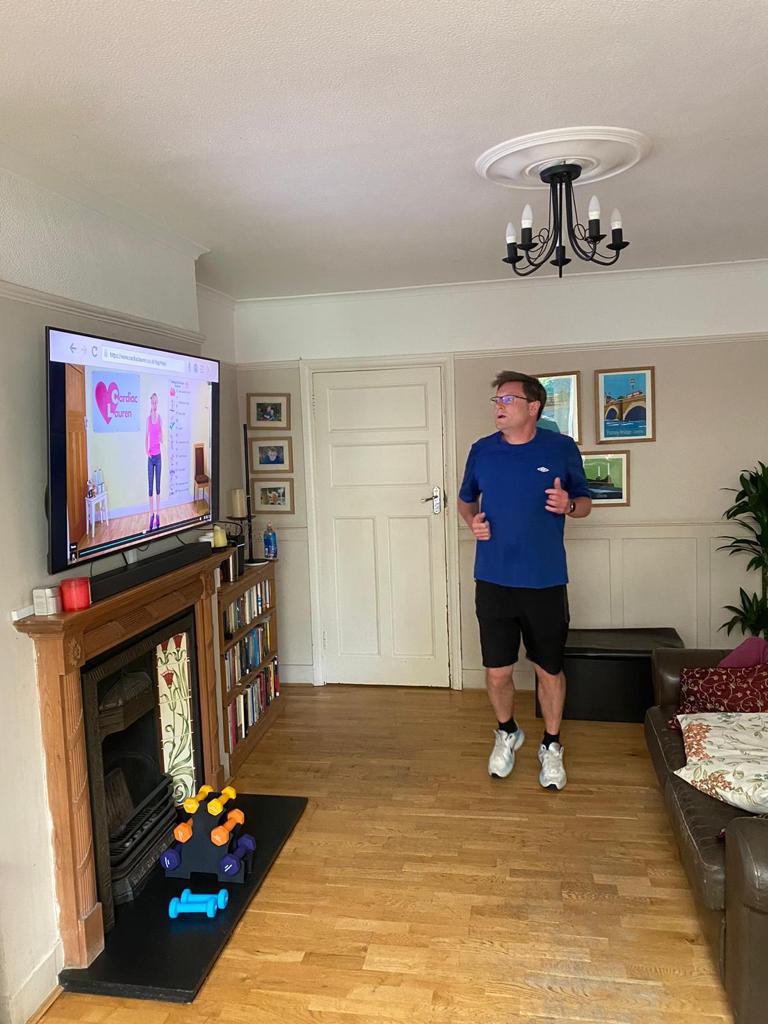
Cardiac Lauren brings together her extensive knowledge of cardiovascular health with her experience and love for sport and exercise. Lauren is no stranger to feel-good, high-energy exercise, as a level 4 exercise specialist, who has taught a mixture of circuit and aerobic style classes for many years.
Cardiac Lauren members can choose from a wide range of cardiac rehabilitation-targeted classes, to suit their confidence, ability and mood. Some of Lauren’s regulars don’t even have a history of a heart event – they just love Lauren’s friendly, energetic and inclusive style, and the chance to get a great workout in!
I love these videos. I find them extremely convenient because I can do them first thing in the morning and they set me up for the day without the hassle of going to a gym.
If it weren’t for Cardiac Lauren I wouldn’t get anywhere near 150 minutes of exercise a week. With them, I get well over. They have helped me get the habit of exercise and I’m sure that they play a big part in keeping me healthy at 66.
Although I haven’t had a cardiac event, I do have scoliosis and your videos complement the exercises that I’ve been given by the NHS.
I particularly appreciate your professionalism on how to exercise safely, especially the rate of perceived exertion. The videos I enjoy most are the ones with a mix of cardio, resistance and balance but I appreciate the variety of exercises that you offer and I do them all. And they are great value for money!
The fact that Lauren’s cardiac rehabilitation classes take place online also means that they are accessible to everyone, no matter where they live. Participants enjoy the convenience and security of exercising from the comfort of their own homes: no gym membership or expensive equipment is needed. In fact, the most you will need is a chair and milk cartons if you don’t own any lightweights.
Lesley Gall
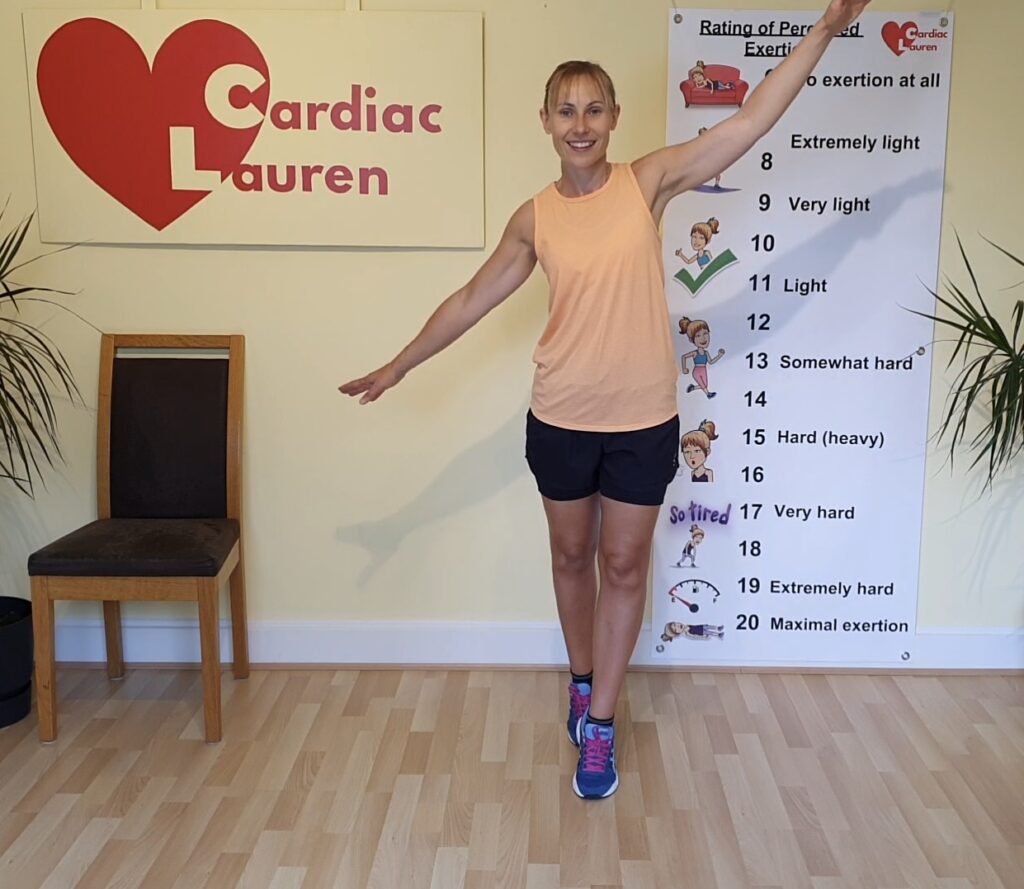
How did you get into cardiac rehabilitation initially and become a cardiac rehabilitation specialist?
I was working as a gym instructor at my local gym and one day there were two older ladies struggling to set themselves up on the bikes. I went over, got them set up on a programme and stayed chatting whilst they exercised.
It turned out that they had not long completed their Phase 3 Cardiac Rehab programme and were just starting out in a Phase 4 gym-based class. At the end of the conversation, they persuaded me that I should speak to the person running the class and find out how I could qualify as I would be perfect in the role. The rest is history!
What is your favourite workout (or sport?)
Dancing is my main love. I started when I was 2 ½ and stopped doing ballet, tap and modern at 18 when I went to university. Since then I taught Line Dancing for 17 years, as well as Salsa and Rock ‘n’ Roll Jive. I miss dancing 3-4 times a week but I know one day I will get back to it.
I do enjoy walking, and I walk at a ‘scamper’ speed – around 4mph – and I enjoy cycling to work.
What is your favourite Cardiac Lauren ‘theme’?
I really enjoy the non-stop format as I love the challenge of making one exercise merge into the next. The other reason I like this theme is because it doesn’t involve any weights as my upper body is weak and I struggle to do many of the arm exercises!
Are there any fun facts about yourself that you’d like to share?
I like to do jigsaw puzzles and I challenge myself to do them without looking at the picture! This is why the Wasgij ones are perfect as the picture on the front of the box is not the picture in the puzzle.
What advice would you share with someone who is navigating the cardiac rehabilitation world?
Listen to your body and give yourself time. This doesn’t just relate to exercise, but to the other changes people may have to make to their lifestyles.
Allow your body to heal, allow your mind to recover from your heart event, work out a plan and strategy of how you are going to move forward and allow yourself to fail sometimes.
Remember to ask for help when you need the support to get back on track and have that fry-up every now and then as it will make you feel good!
Do you use music in your classes? What’s your favourite workout song?

Yes, music is very important when exercising as it helps encourage us all, plus it can sometimes make it easier to exercise when you are singing along to the tunes.
Sadly the UK music licences do not allow us to play the 50s, 60s, Motown and 70s music online that I can play in my face-to-face classes, but there are some good disco, salsa, 80s and Afro beats tunes that I can play.
I was brought up listening to Captial Gold on the radio so I love all the 60s tunes, and I learnt all the 50s tunes when I taught Rock ‘n’ Roll Jive so they are my favourite. For the online music, there is a Salsa track that has a wonderful beat and feel to it and I love hearing it.
I’m a ‘technophobe’ and am afraid that I won’t be able to navigate online classes – can I still attend your classes?
As long as you can sign into the members area of the website everything is easy to find. You can even stay logged in so you do not have to remember your password each time you want to do a class.
You can find the most recent classes under the main title Class Timetable, plus there are options for all the different themes of classes on the right-hand side so you can go straight to the section you want.
Can people in Phases 1-3 get involved in your classes?
Cardiac Lauren is for Phase 4 onwards, so come and join us when you have been discharged from Phase 3, or if you have been told you are at risk of a heart event. Signup here.
If you are still in Phase 3, I have some specialist exercise videos you can access on my website and participate in alongside the face-to-face classes that your NHS team provide.
If you are in Phase 1 or 2 then I encourage you to just start walking on a daily basis, aiming to achieve 30 minutes of continuous walking after 4-6 weeks from your procedure. Being active daily at home is sufficient exercise for these Phases.
What to expect after having a mild heart attack
After a heart event, it is normal to feel anxious and unsure about your recovery. Many people aren’t sure about which activities they can resume and which to avoid, as well as understand the steps to their rehabilitation when they can return to work.
We believe that knowledge is power when it comes to recovering from a mild heart attack, in order for the individual to take back control of their health; avoid complications or setbacks; and continue to enjoy their life to the fullest.
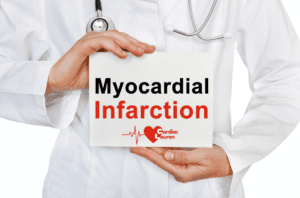
What is a mild heart attack?
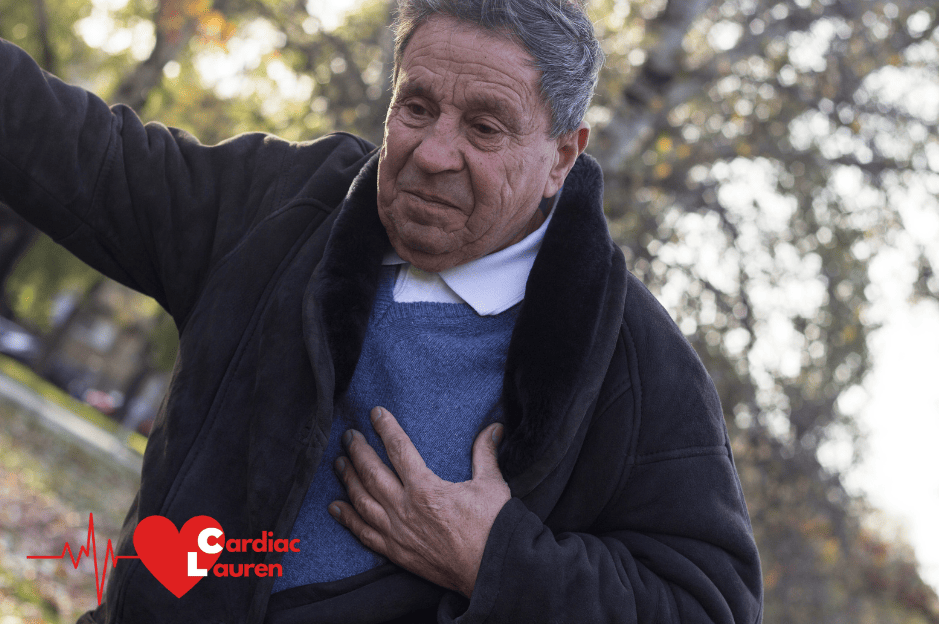
The term ‘mild’ is used to describe a heart attack in which the blood supply to the heart becomes only partially blocked, as opposed to total blockage for a prolonged period of time. A ‘mild’ heart attack is formally known in the medical world as a Non-ST segment elevation myocardial infarction (NSTEMI) as opposed to the more severe ST-segment elevation myocardial infarction (STEMI). Nevertheless, a mild heart attack is still a serious medical event and one that can be deeply upsetting. The positive news is that recovery programmes are well-researched and trusted, to give you the best chance of avoiding future heart events and getting back to normal life. Many people make a full recovery from a heart attack.
Phase 1: What to expect after a mild heart attack while still in hospital
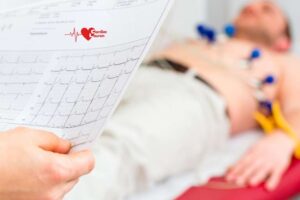
After a mild heart attack, you may remain in the hospital to receive medical treatment and undergo diagnostic tests to determine the extent of damage to your heart. This is known as ‘Phase 1’ and the main goals during this time are to stabilise the patient, prevent further damage and initiate treatments to help the heart muscles recover.
Your hospital treatment plan in Phase 1 will depend on the severity of the heart attack and any underlying medical conditions you may have. Generally, treatment may include medications such as aspirin, nitroglycerin, beta-blockers, or statins to manage symptoms, improve blood flow to the heart, and reduce the risk of further heart attacks.
If you have had angioplasty or stents following your mild heart attack – a painless procedure used to open up narrowed or blocked arteries – you can expect to be in the hospital for about 2-3 days. Any other procedures or surgeries follow more severe (STEMI) heart events, where recovery time in the hospital will be longer.
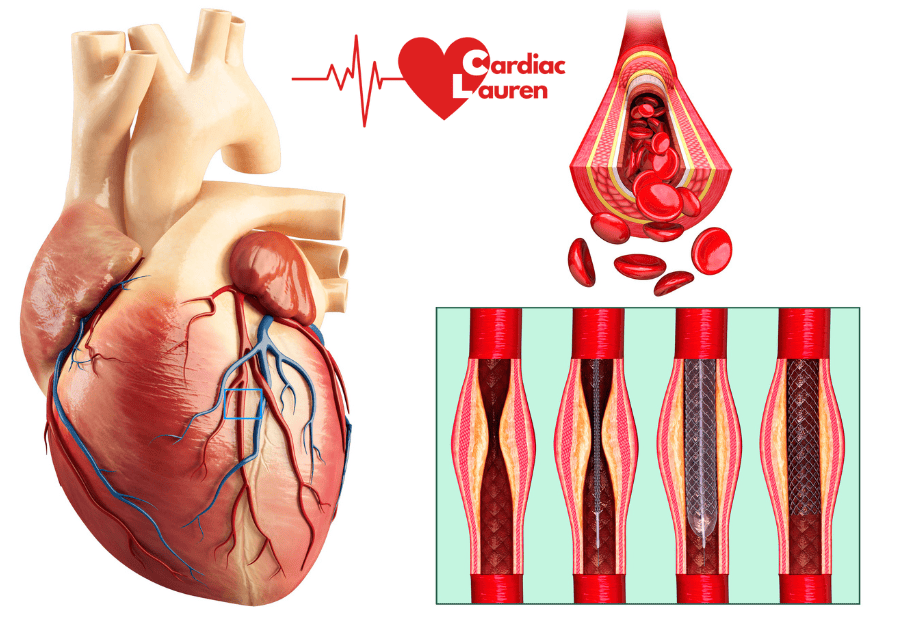
Bottom right: blocked artery, angiogram, angioplasty, stent fitted into the artery.
You may also receive consultation on lifestyle changes you should make, such as adopting a heart-healthy diet, quitting smoking, reducing alcohol consumption, and engaging in regular physical activity.
When your doctor decides that you are in a stable condition to go home and begin your recovery, you will be discharged from the hospital. The summary notes from the hospital will have been forwarded to the local NHS cardiac rehabilitation team and they will make contact by phone.
For more information about Phase 1 after a mild heart attack, click here.
Phase 2: what to expect after a mild heart event after hospital discharge
Recovering from a heart attack at home can be a gradual process which requires the patient to be disciplined and proactive about their health. Alongside the NHS cardiac rehabilitation team who you will be in contact with, you will be responsible for your own recovery – but don’t worry: the main thing to do in Phase 2 is rest and take it easy.
You can expect to feel tired and sluggish when you return home, however, the key here is to continue doing light household activities. These include getting up and getting dressed in the morning; washing; making hot drinks; going up and down the stairs; washing up and going for short walks.
It is recommended that a trusted person stays with you to help out, however, you should also try to be as independent as possible.
Aside from rest, you will need to follow the instructions given to you by your doctor, which are likely to include taking medication at the correct times. Other tasks you will need to do as follows:
Remember to:

- Take your discharge letter from the hospital to your GP or ask a loved one to do it. This allows your GP to know about your heart attack and the treatment you’ve had.
- Make an appointment to see your GP within the first couple of weeks of being home so that you can get a repeat prescription for your medicines.
- Take your medication according to your schedule.
- Attend your follow-up appointment at the hospital.
- It is also important to look out for your mental well-being after a mild heart attack. It is common to feel anxious, depressed, overwhelmed or hopeless after this upsetting event.
You can visit the British Heart Foundation’s emotional support page here. They also have an online magazine called Heart Matters about learning to cope with your diagnosis – Cardiac Lauren is a fan of this magazine.
Mind is also a mental health charity with many resources to support you. Why not check out their online community, Elefriends, to chat with those who might be experiencing the same feelings as you?
You could also visit the NHS self-help webpage to read about online or remote services that can improve your mental well-being.
For more information about Phase 2 after a mild heart attack, click here.
Phase 3: your active recovery programme after a mild heart attack
In Phase 3, education, exercise and support from a multidisciplinary team are put together in a 4–12-week programme. The primary goal of Phase 3 cardiac rehabilitation is to help individuals return to their normal daily activities and improve their overall health and well-being.
The individual takes on more responsibility for their recovery after the mild heart event, as they build up to be able to complete 20 minutes of continuous activity safely (being able to monitor their own capability and intensity).
Patients will become very familiar with RPE, which stands for Rating of Perceived Exertion, during Phase 3 recovery. This is a subjective measure of how hard someone feels they are exercising – to help people gauge their intensity level during physical activity. Anywhere between RPE 11 & 14 is generally desired – i.e. ‘fairly light’ to ‘somewhat hard’.
Phase 3 recovery after a mild heart attack sees the patient become physically stronger and more knowledgeable about their condition.
More information about Phase 3 recovery after a mild heart attack can be found here.
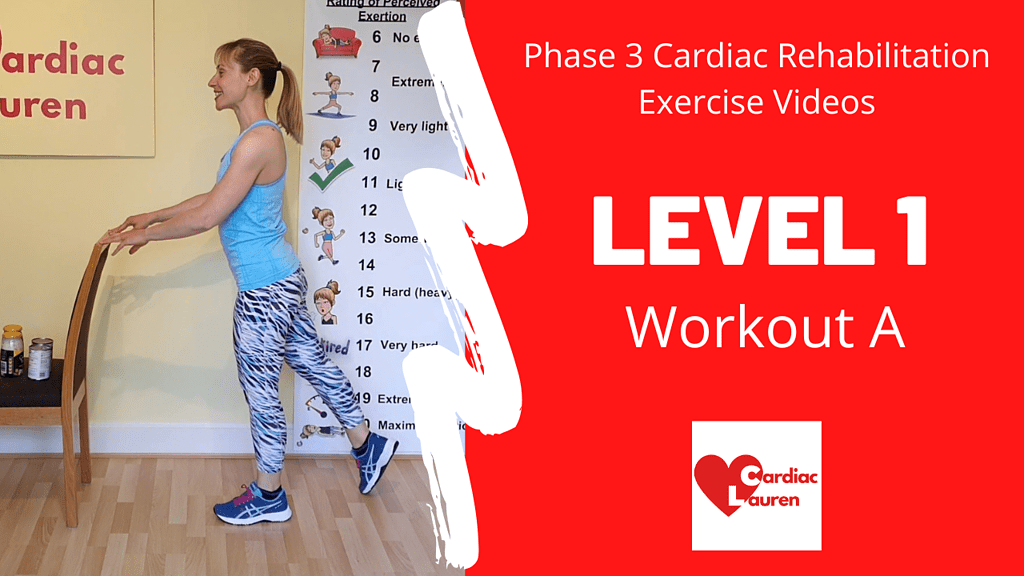

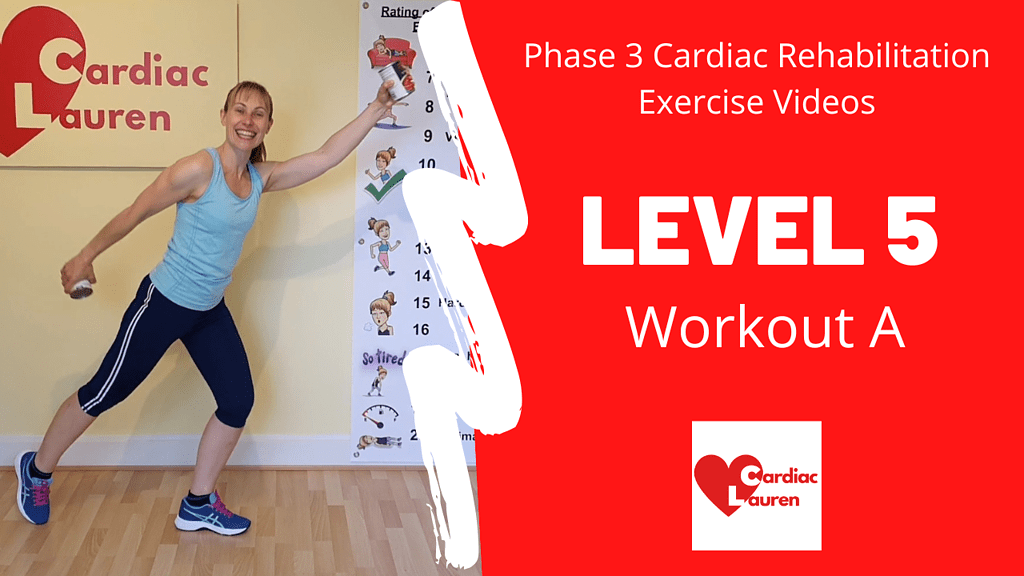
Phase 4 recovery after a mild heart attack
Phase 4 cardiac rehabilitation is where the fun starts! You will have built up strength and a generally enhanced well-being after your Phase 3 exercise and education programme, which means you are now ready to start reaping the benefits of regular fun, challenging and, crucially, safe exercise.
Joining Phase 4 cardiac rehabilitation exercise classes can be life-enhancing and build your strength, mood and confidence while living with a history of a mild heart attack.
Cardiac Lauren offers friendly and convenient online classes to suit all Phase 4 patients after a mild heart event – whether they are used to regular exercise or are just starting their fitness journey.
My participants love the fact that they can choose when to exercise and which style and intensity of class to do each time.
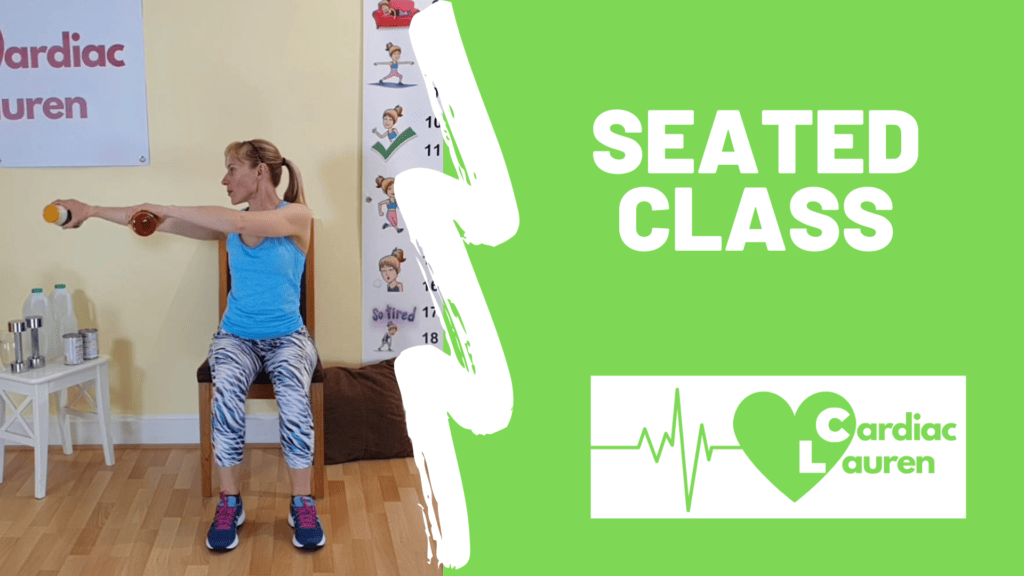
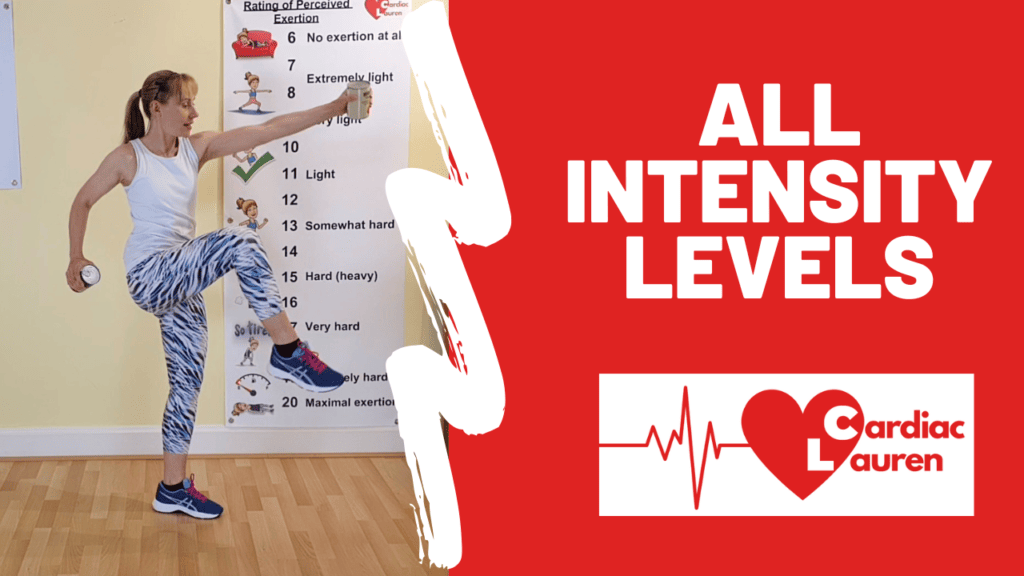
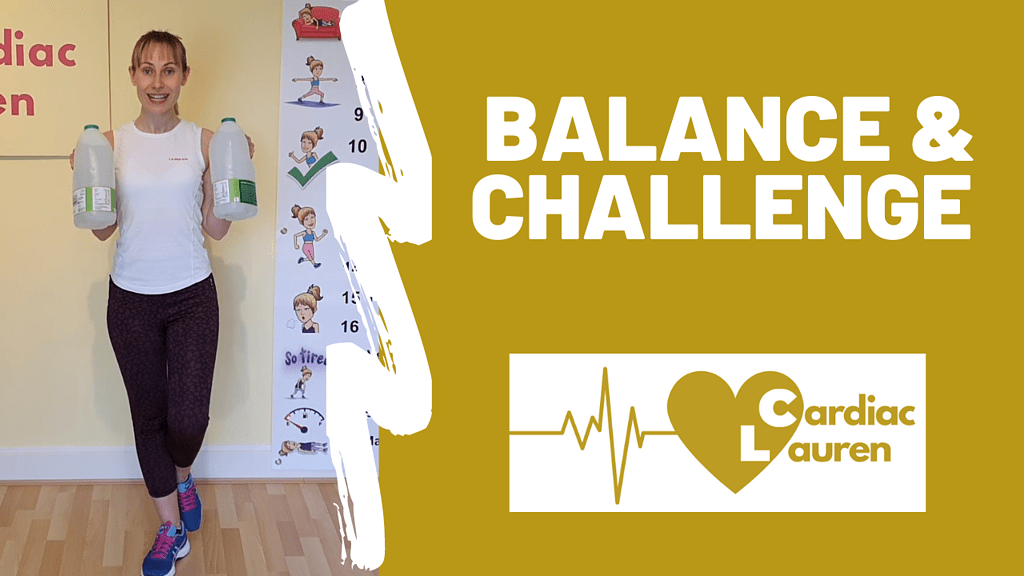
Choose your plan and get started here.
Welcome to My NEW Website
The Cardiac Lauren website has been redesigned to make it even easier and more fun to use. This isn’t just a new theme, it’s a complete rebuild from the ground up, with a focus on ease of use and speed. I’ve also expanded the range of free information available. My new Resources section has information … Read more

